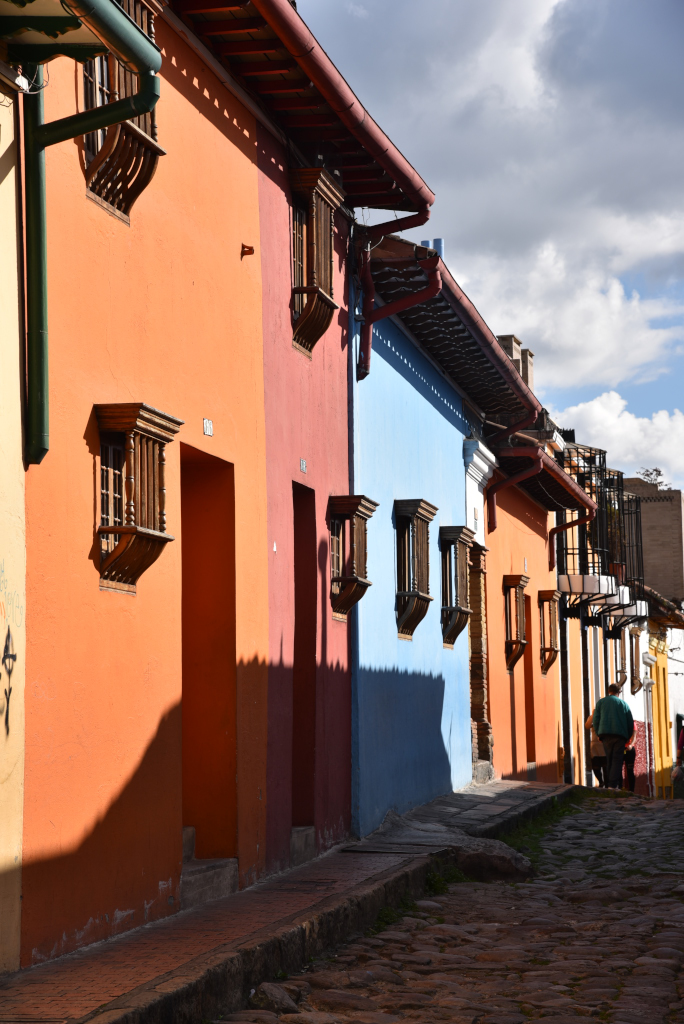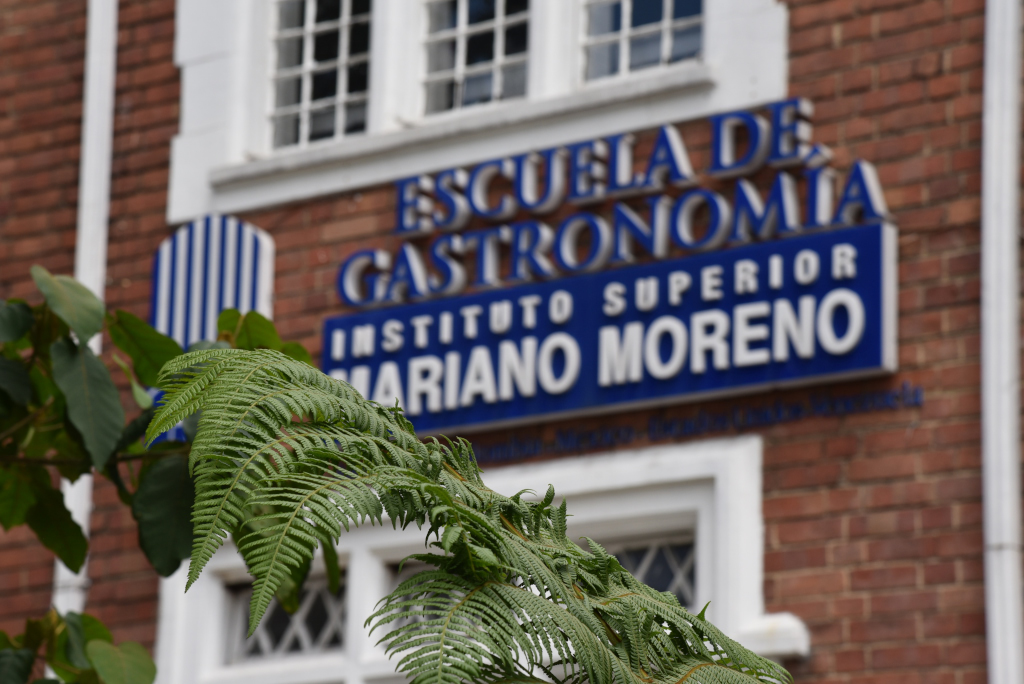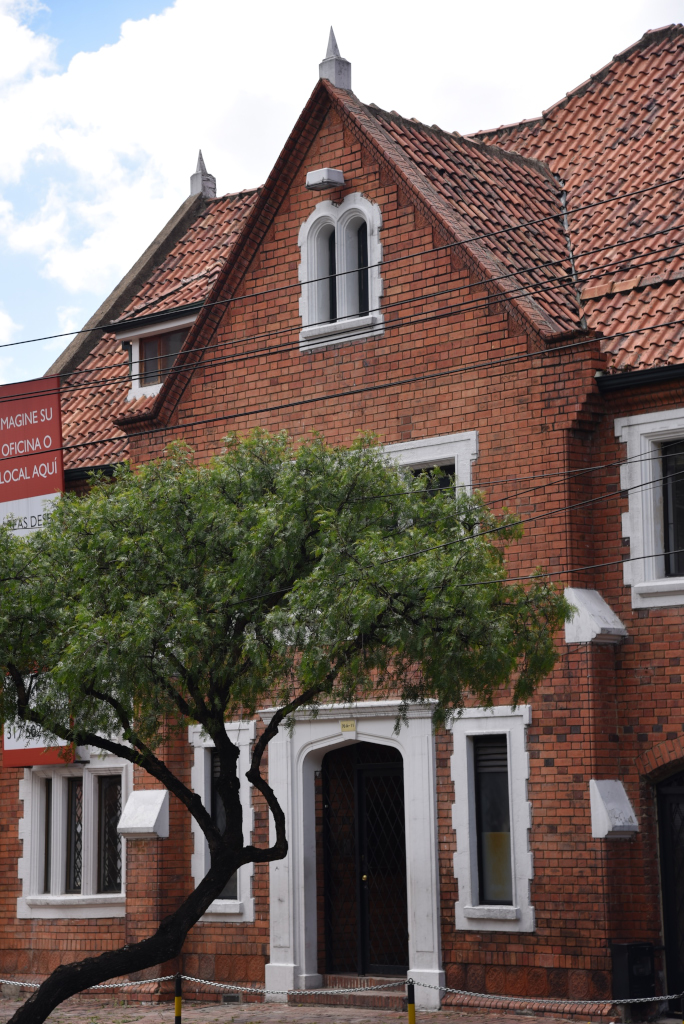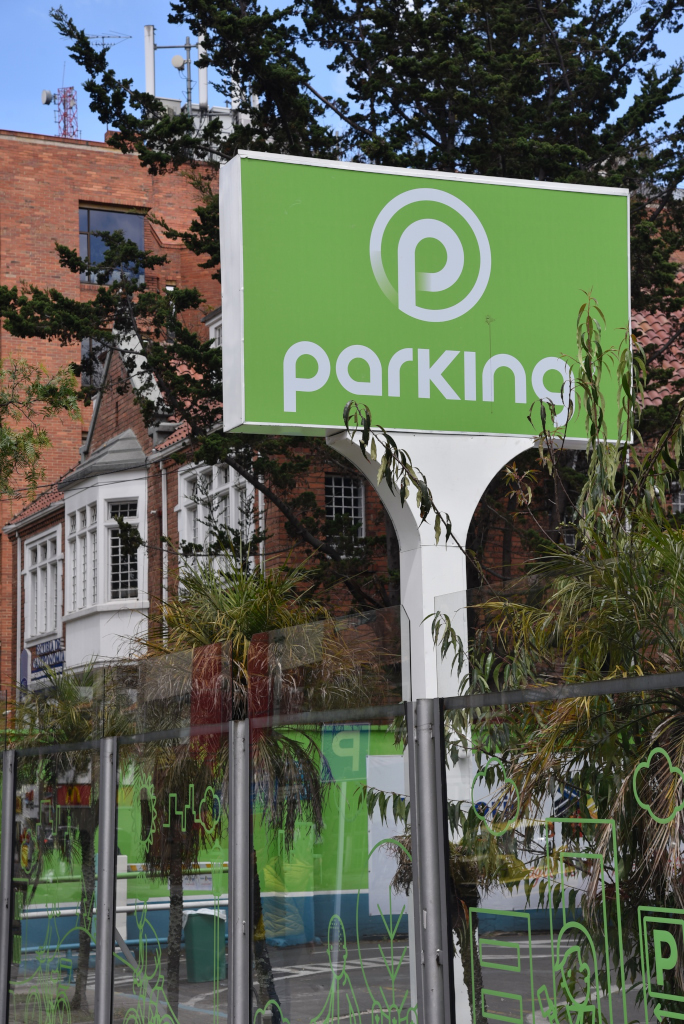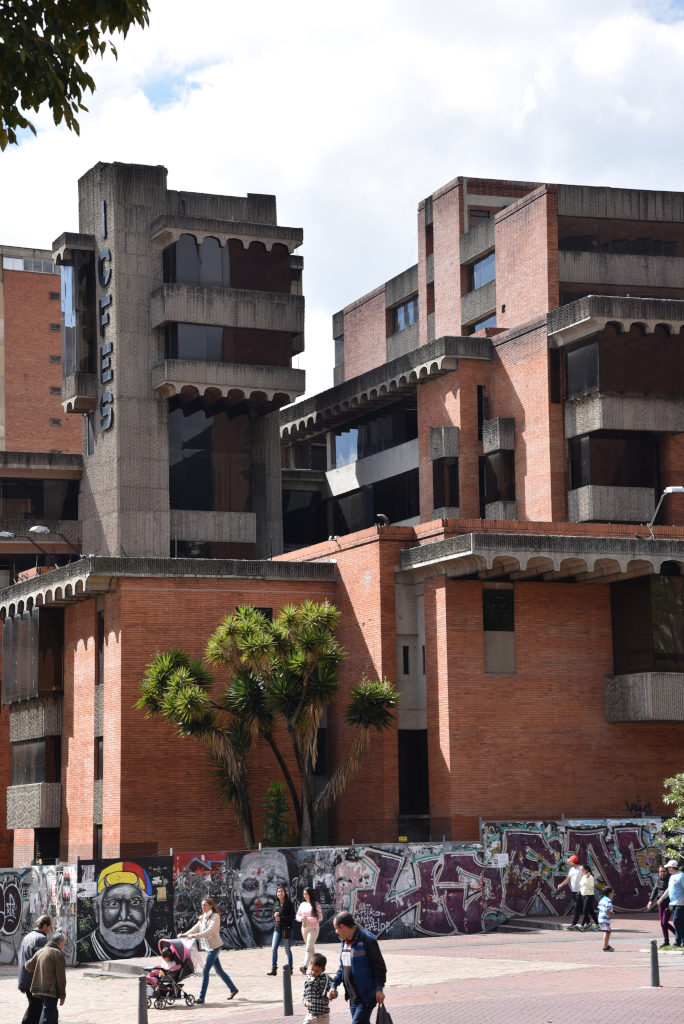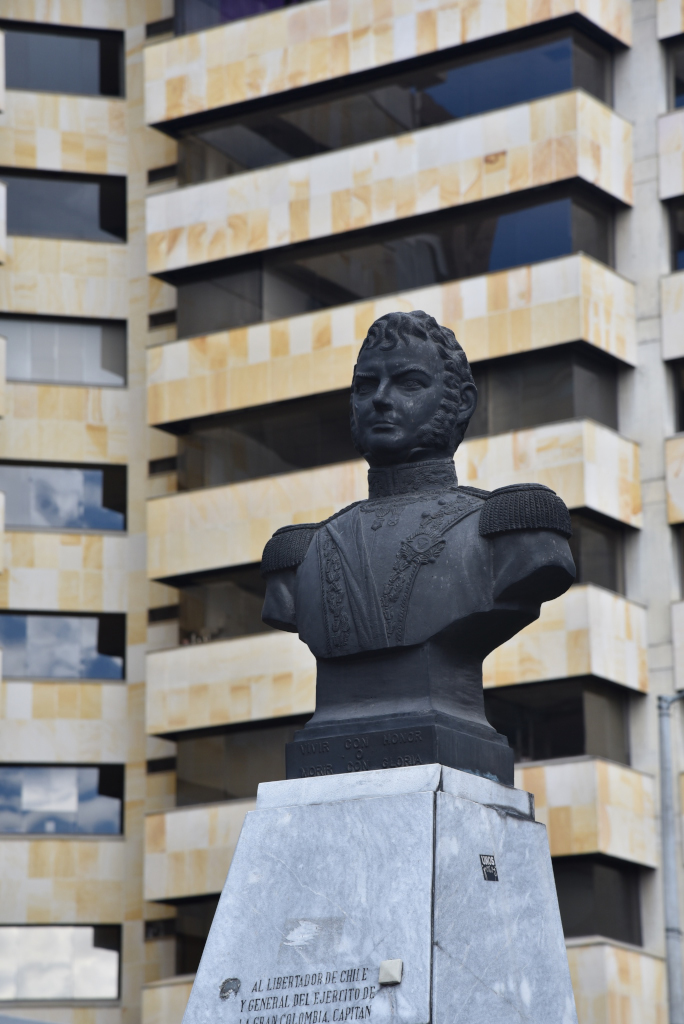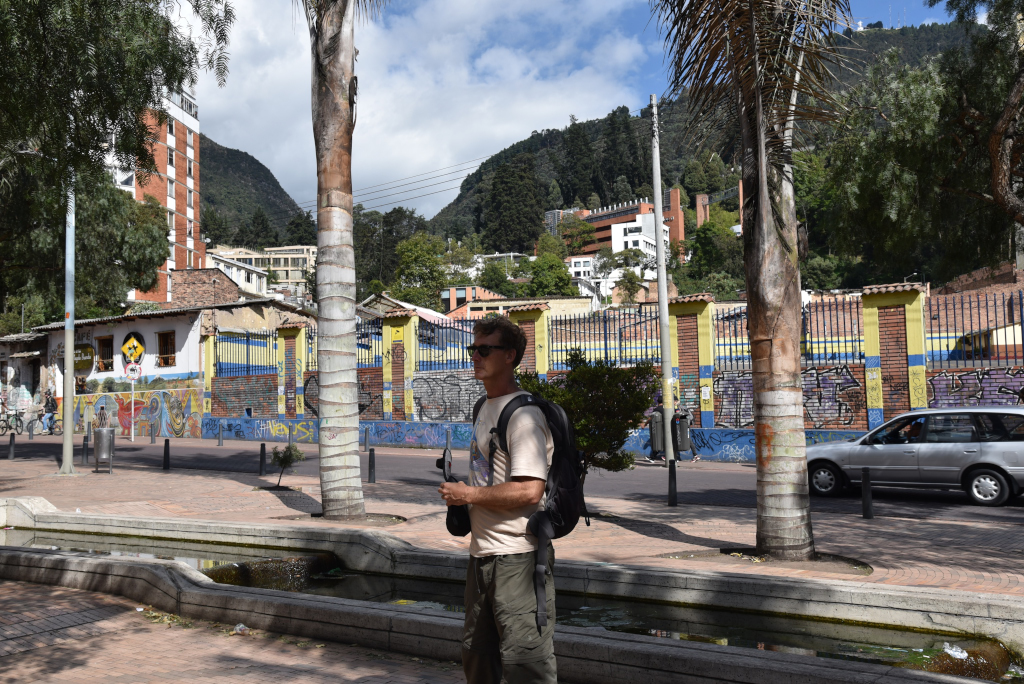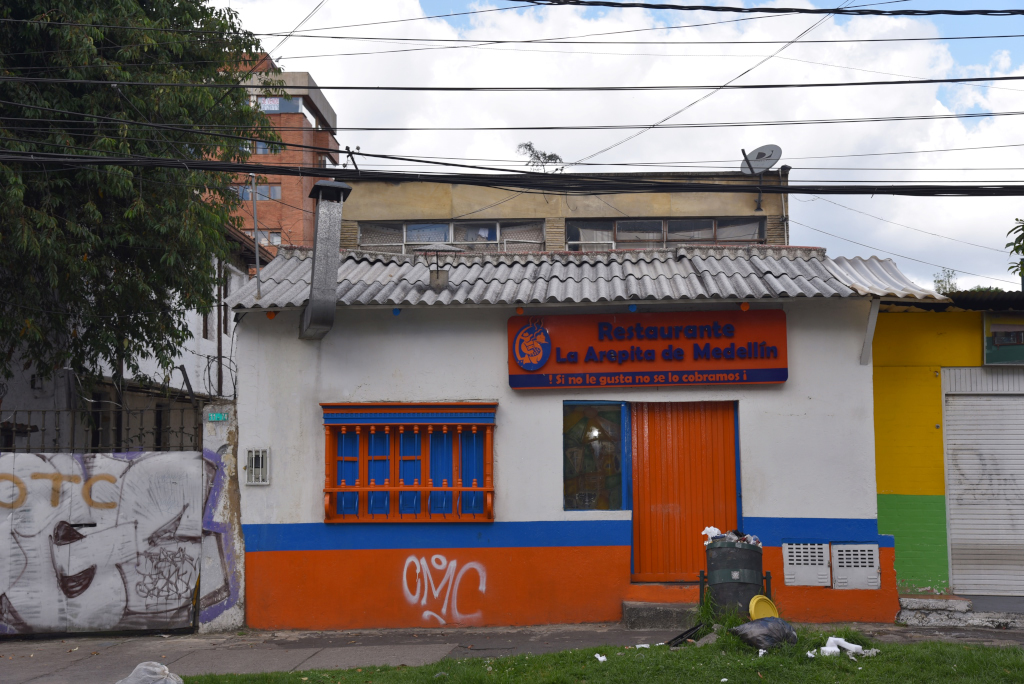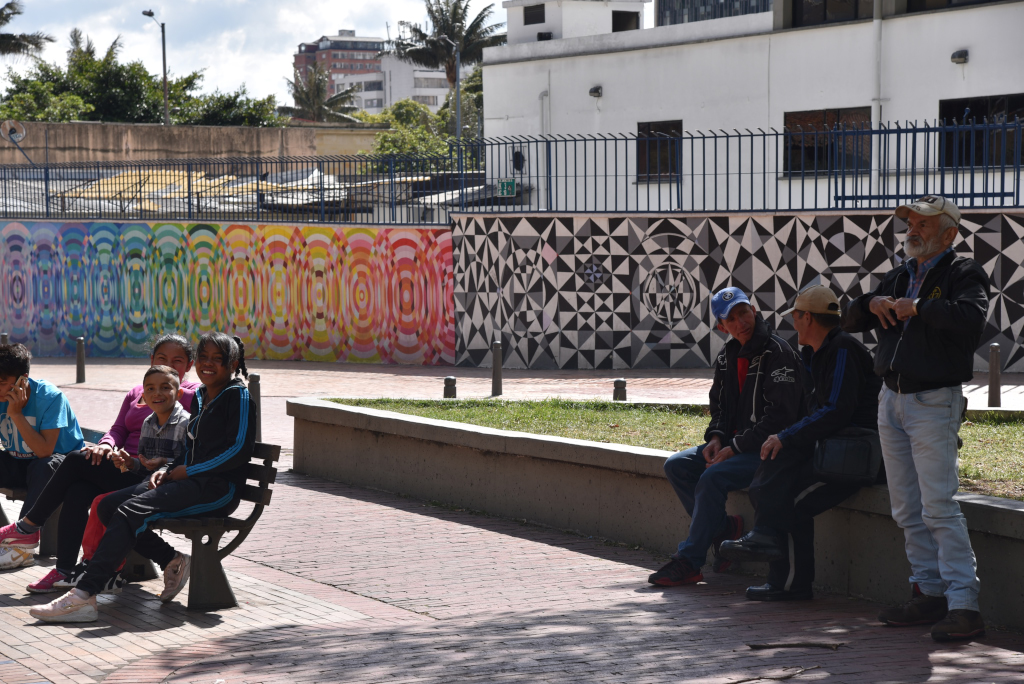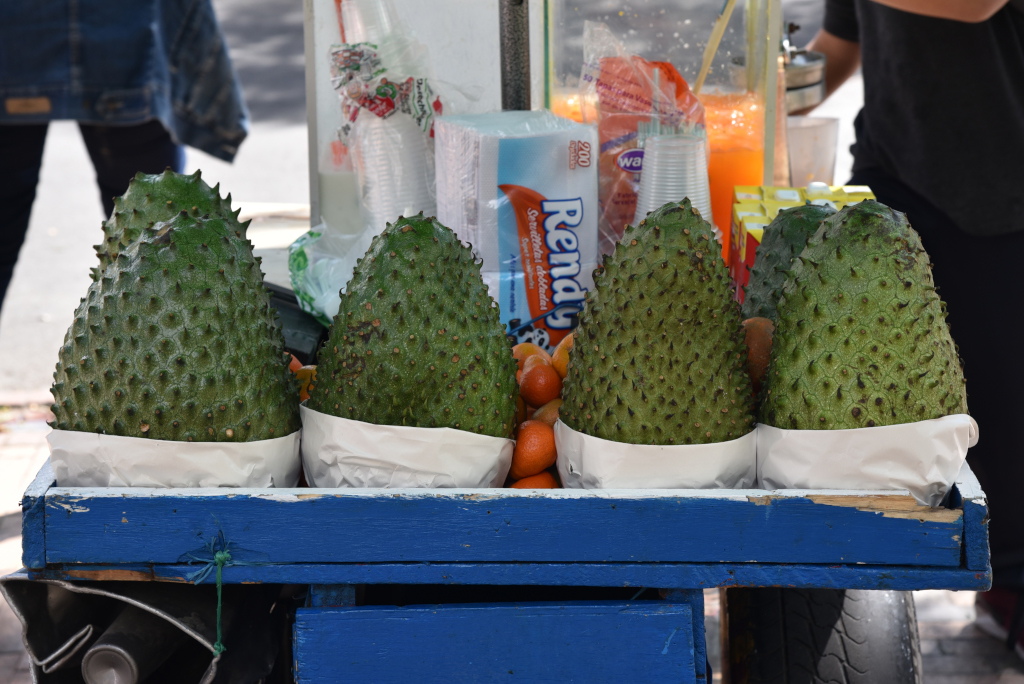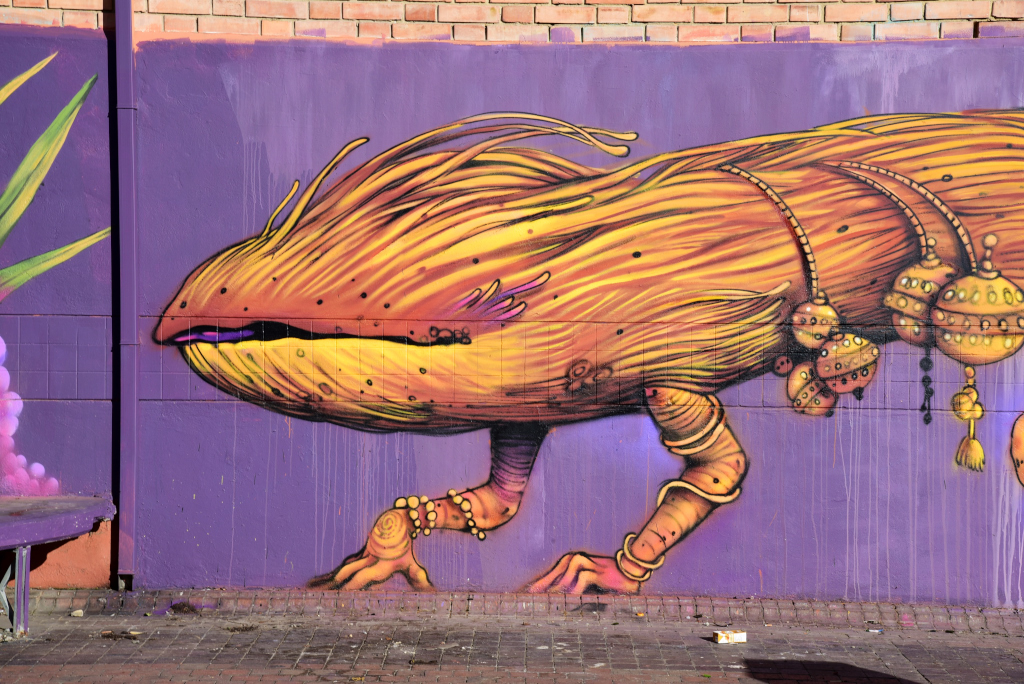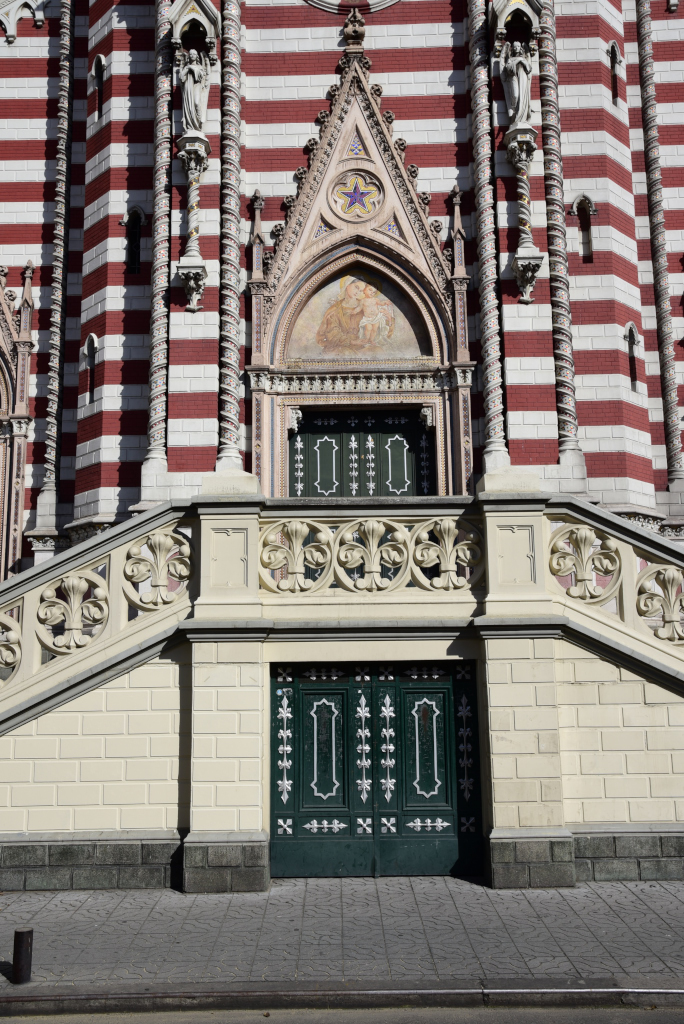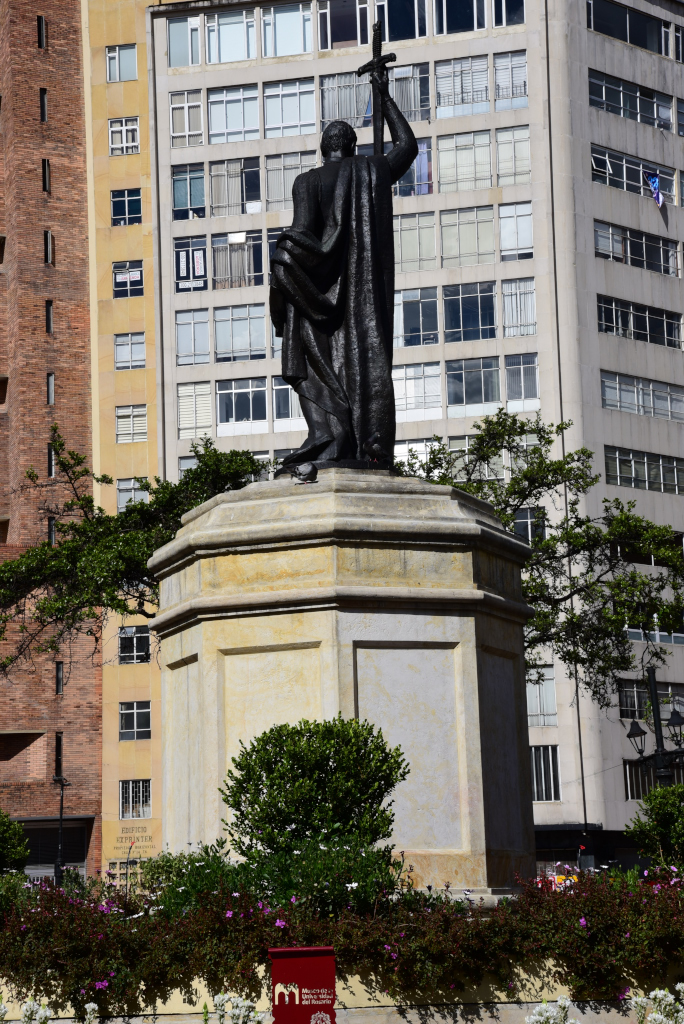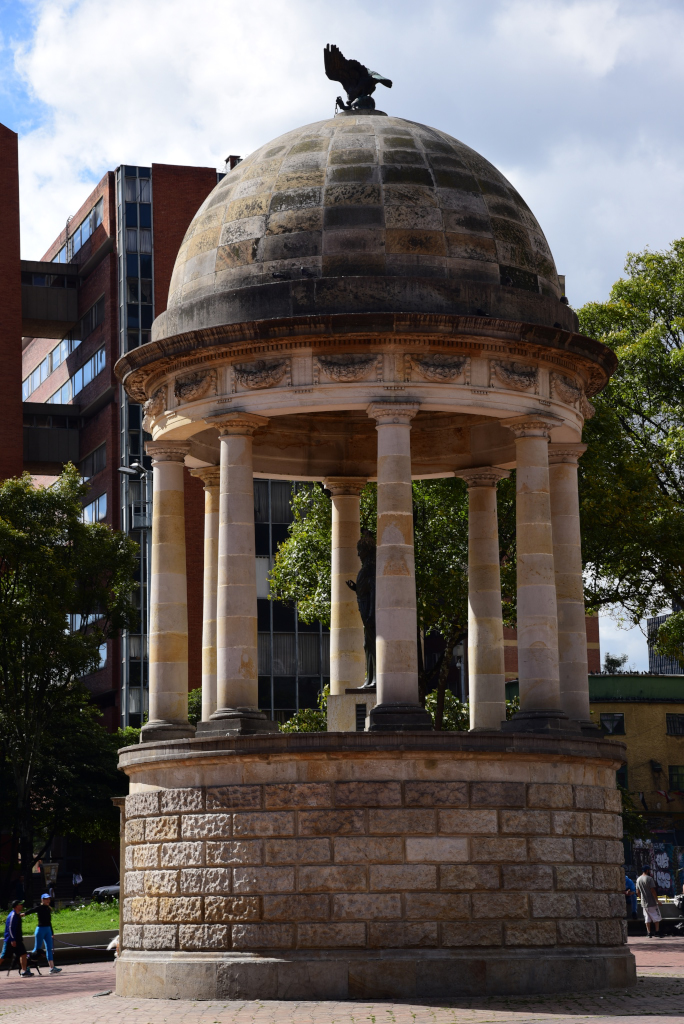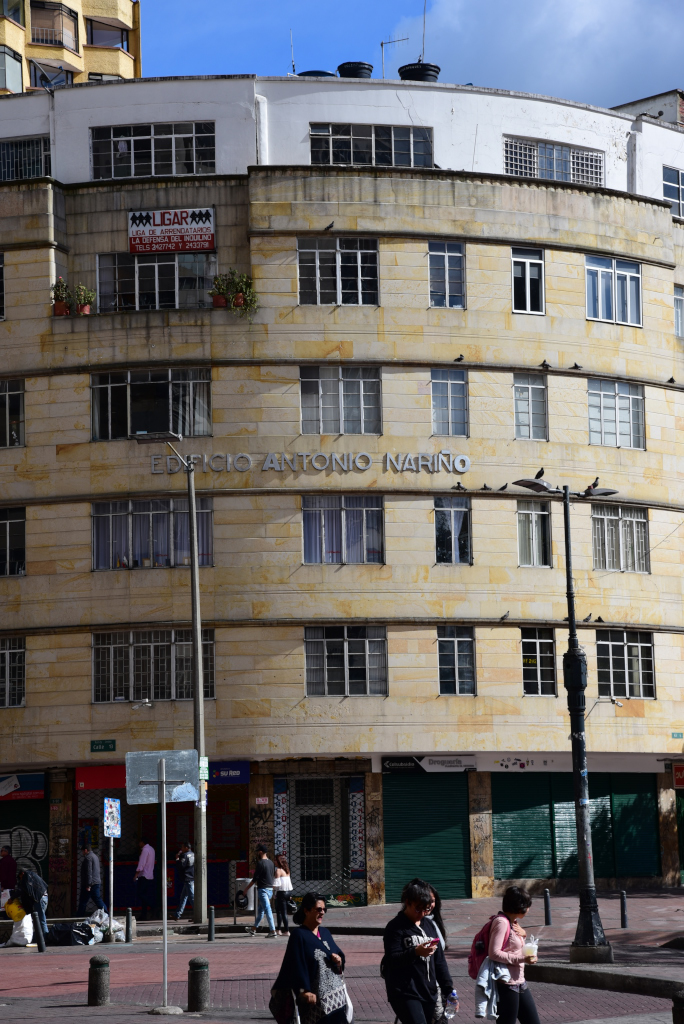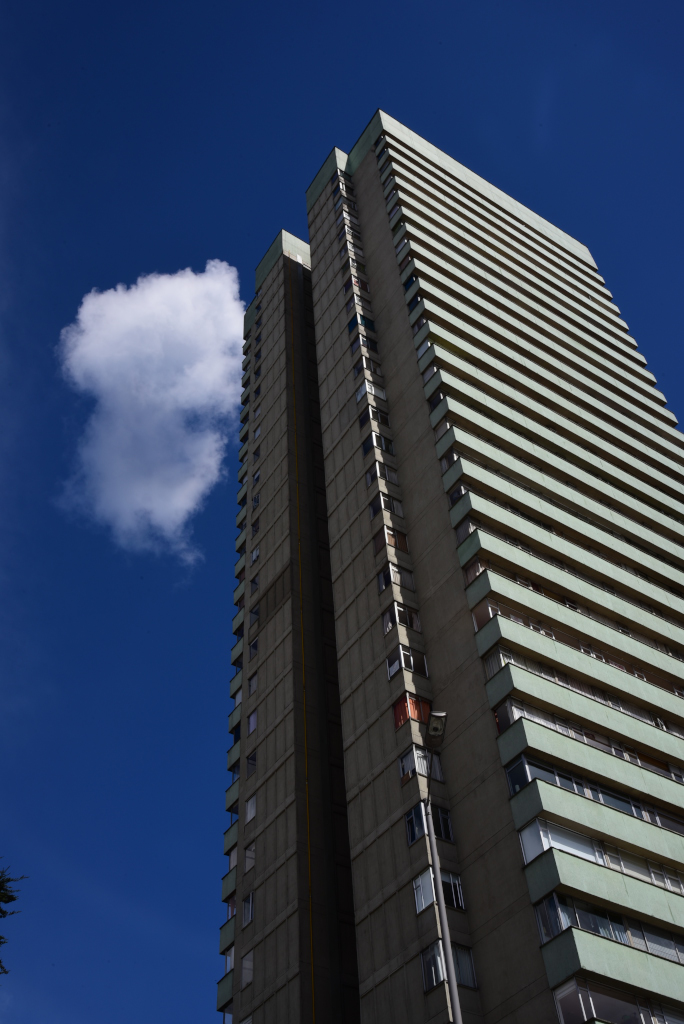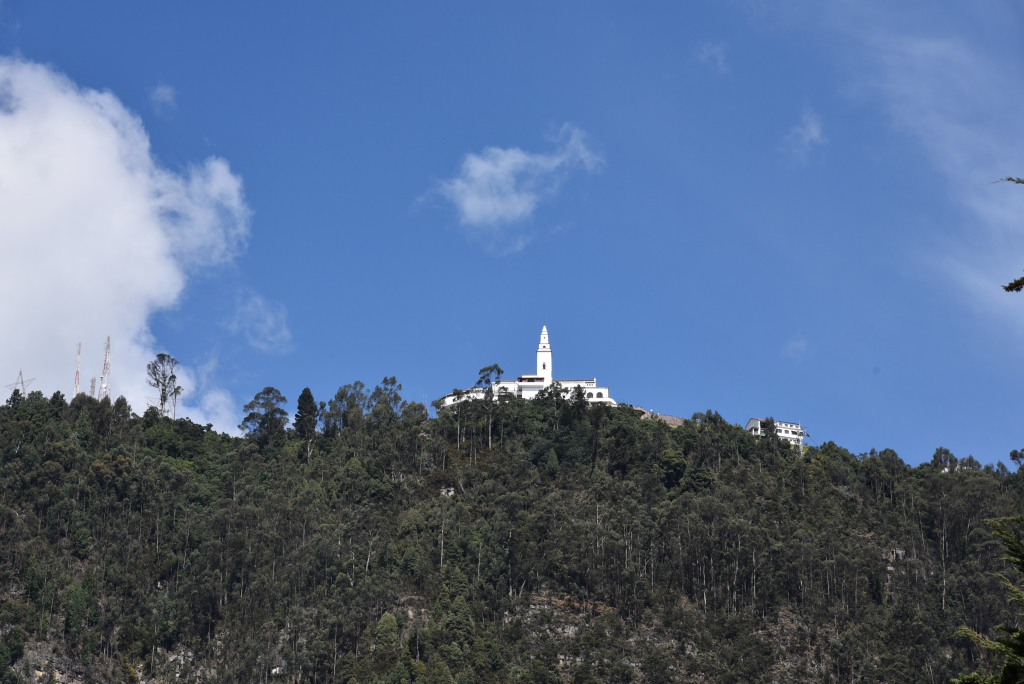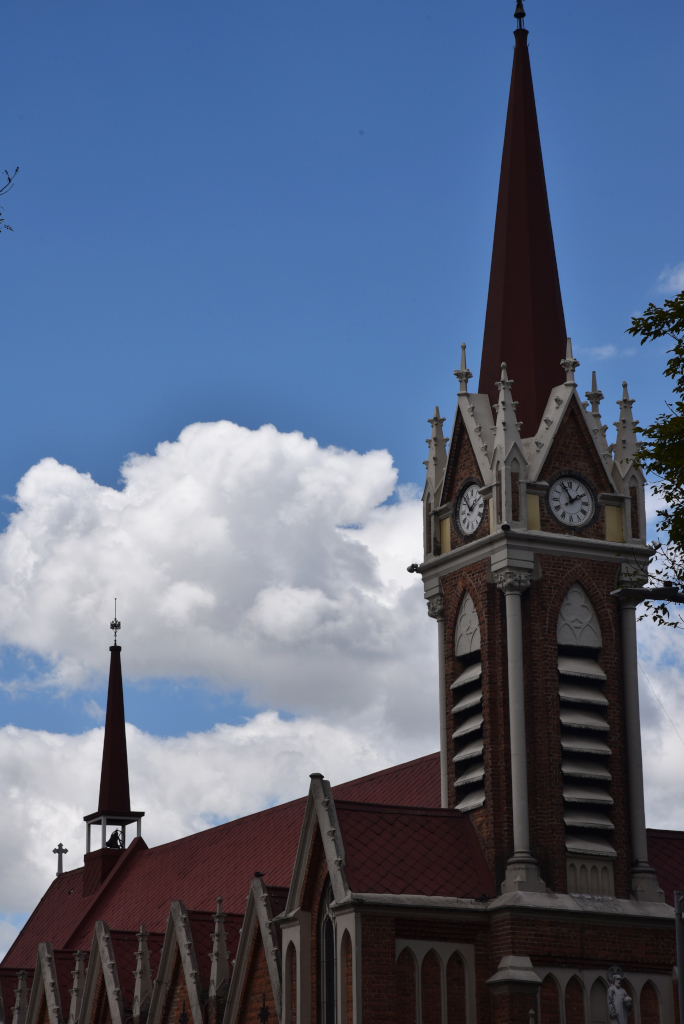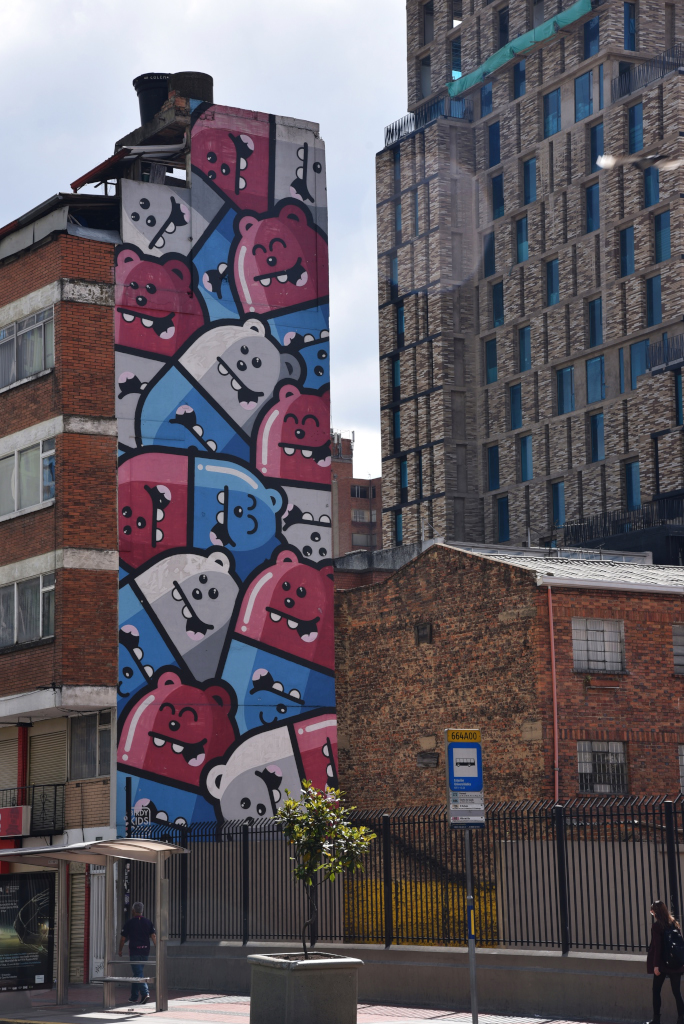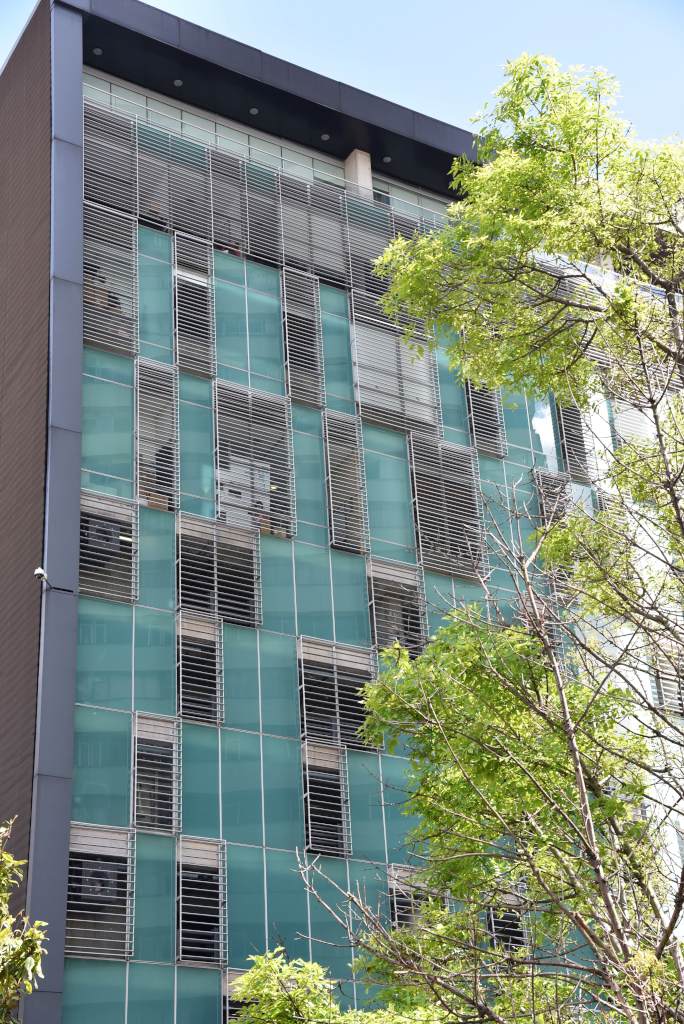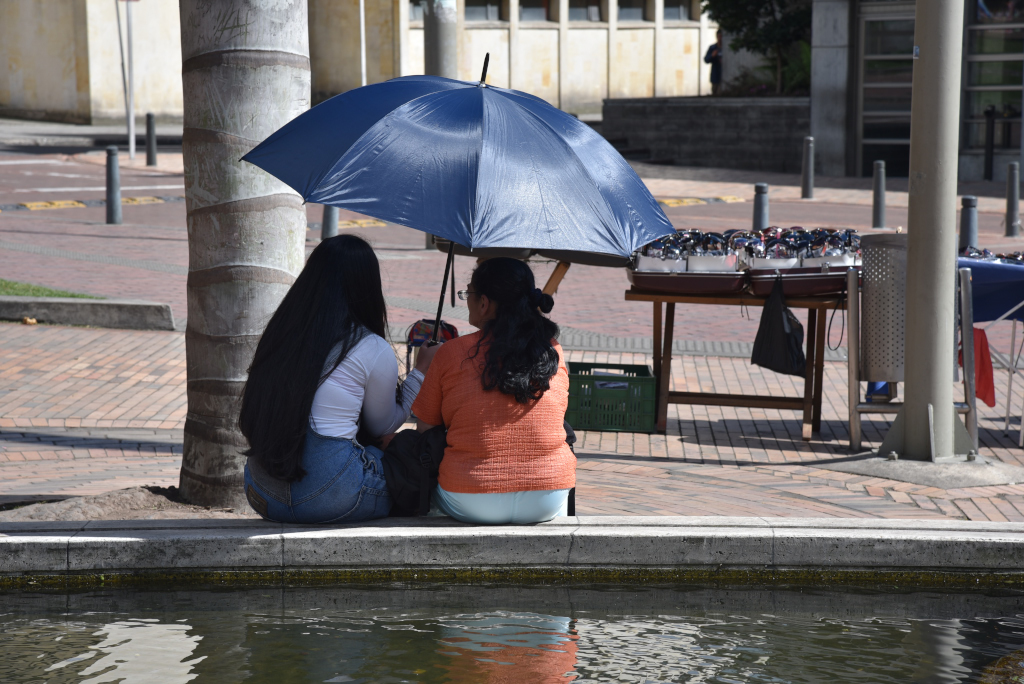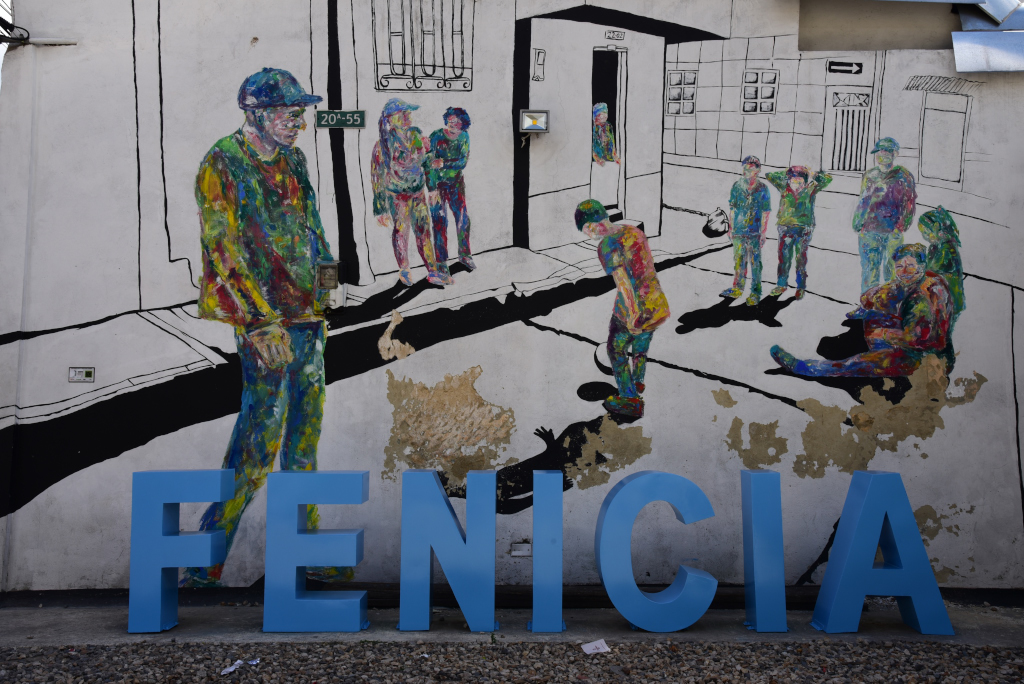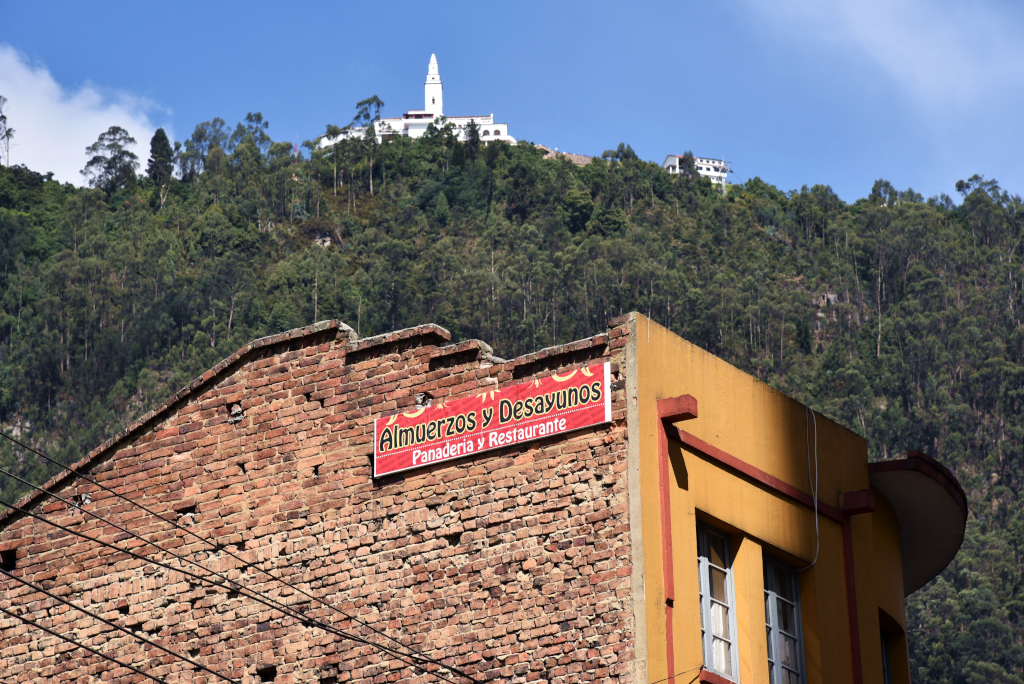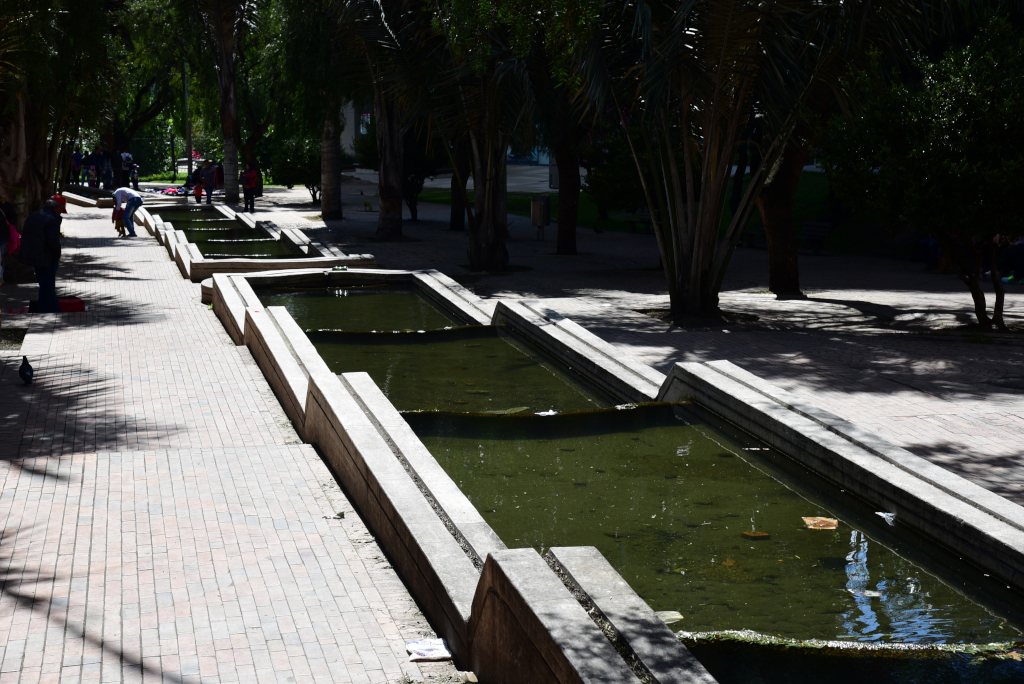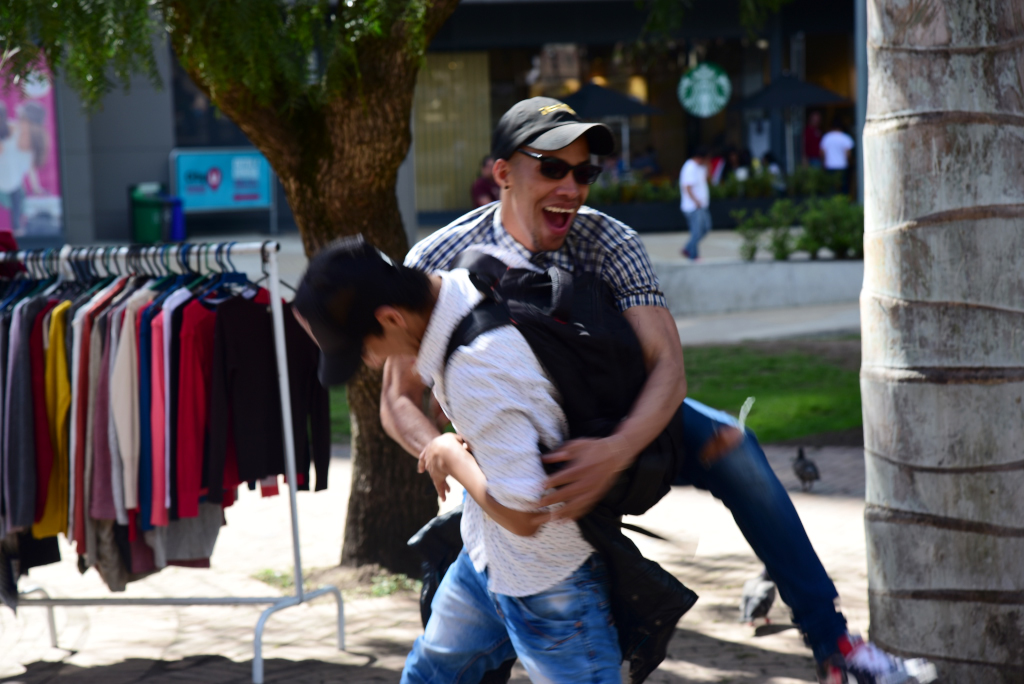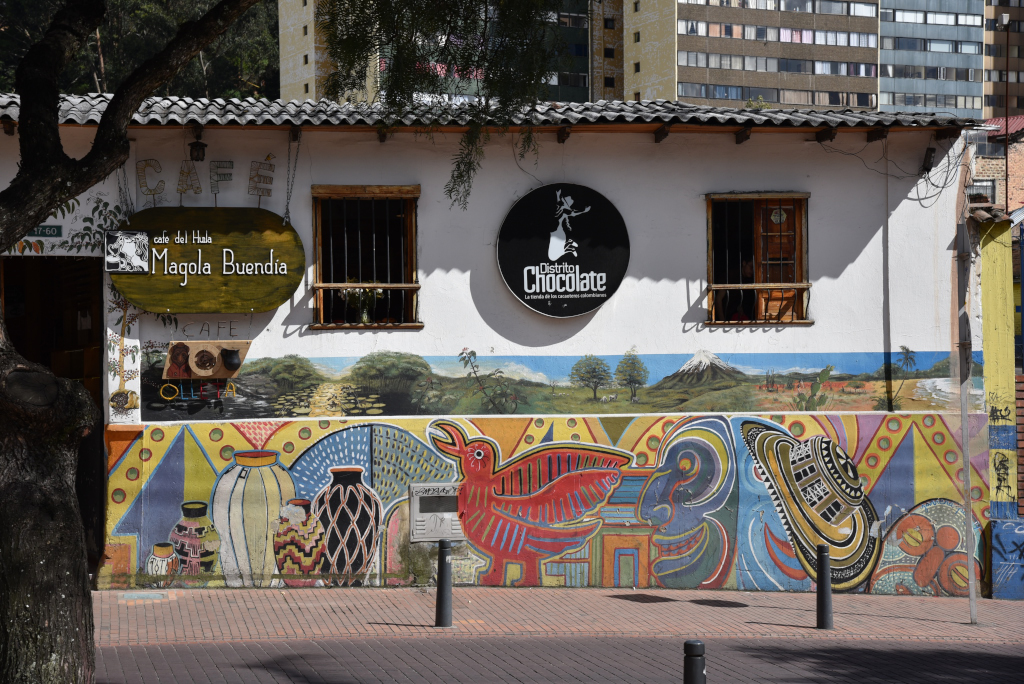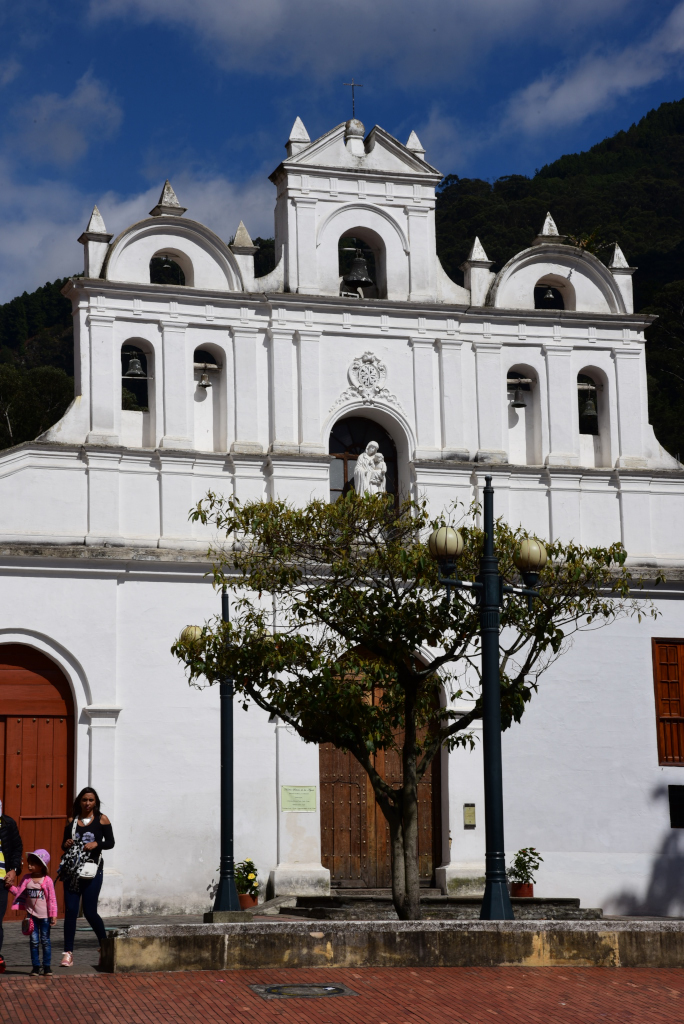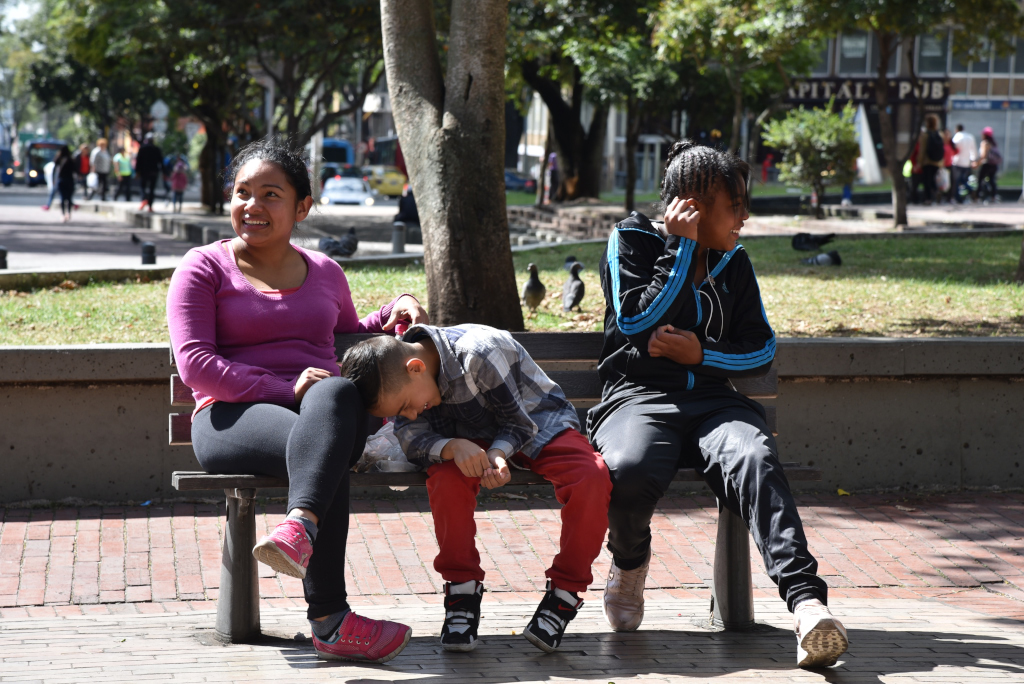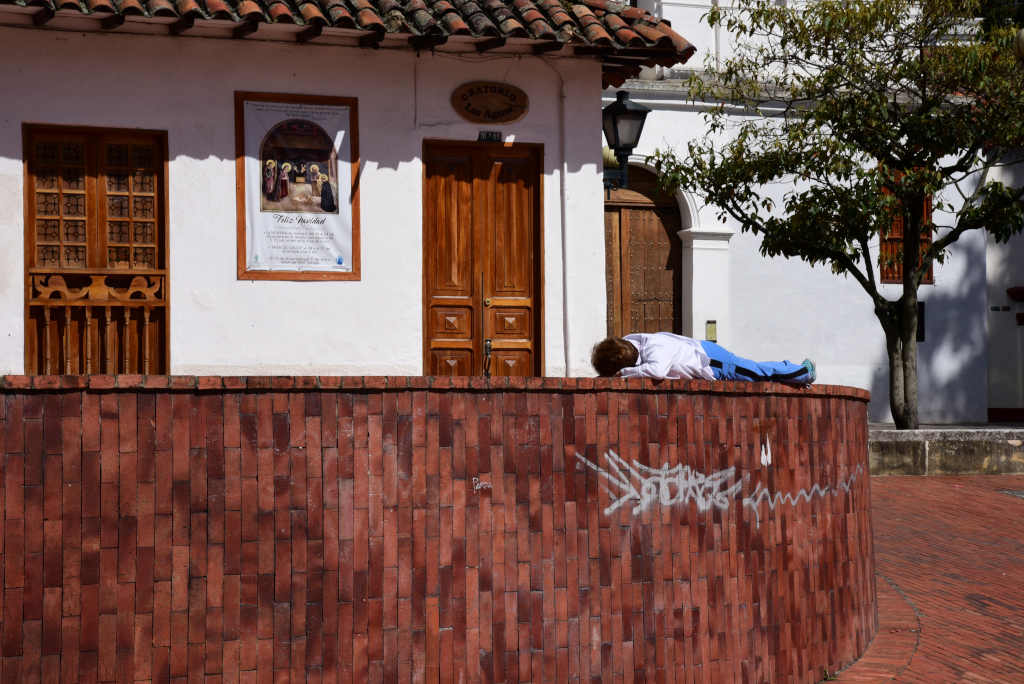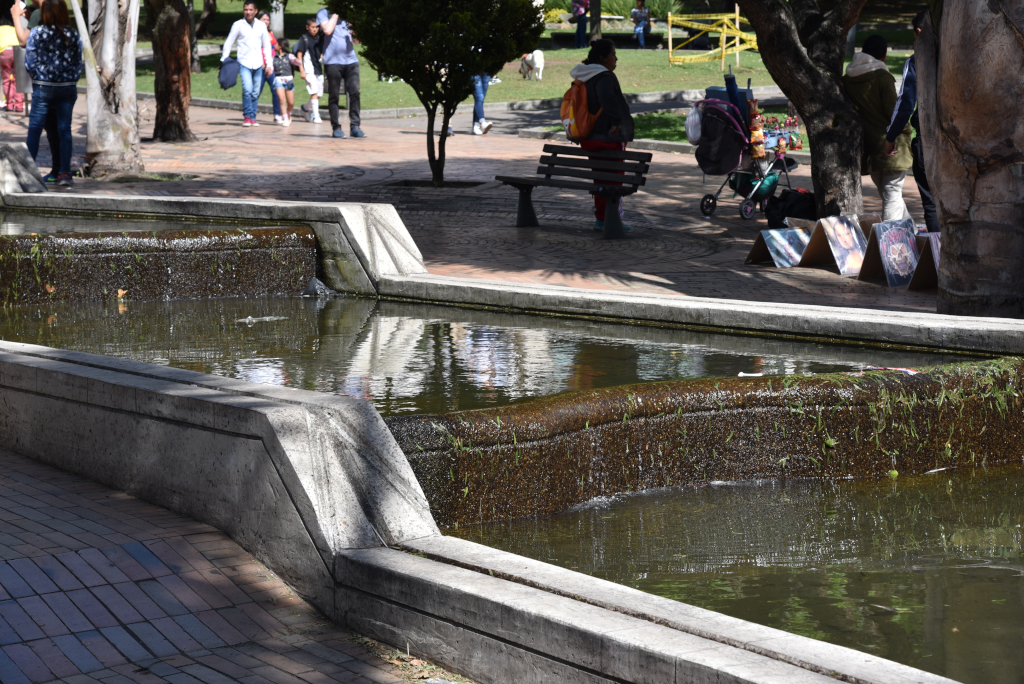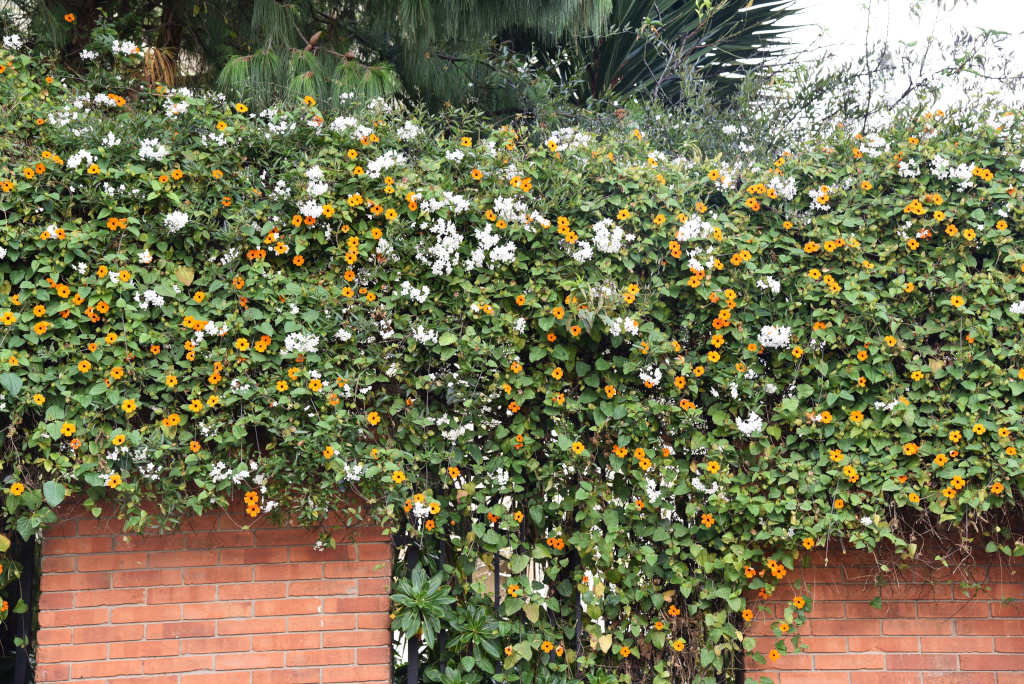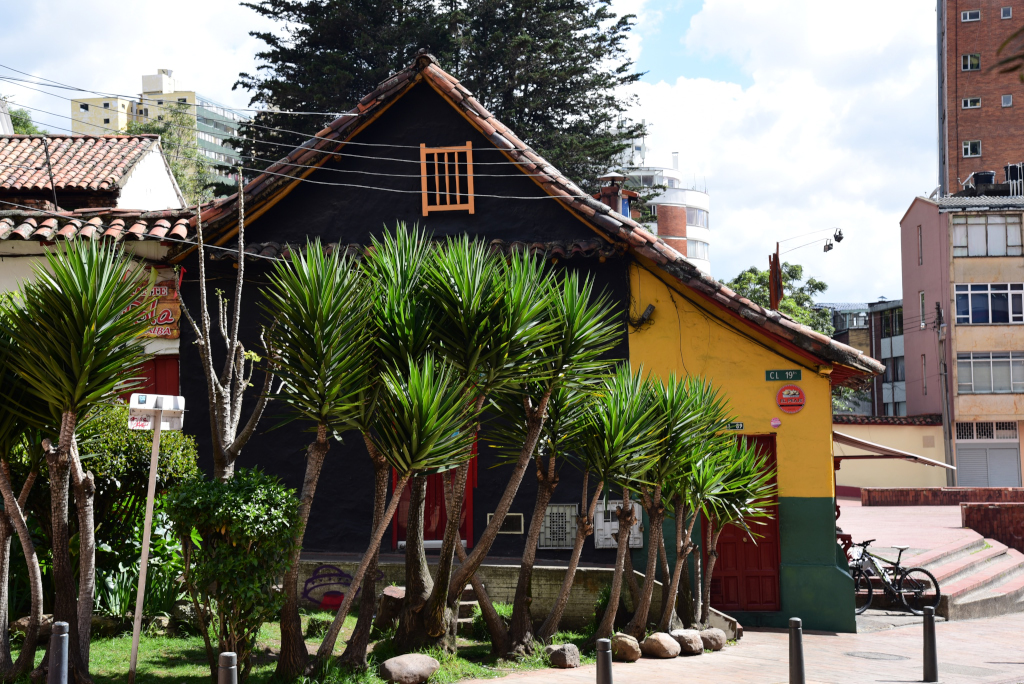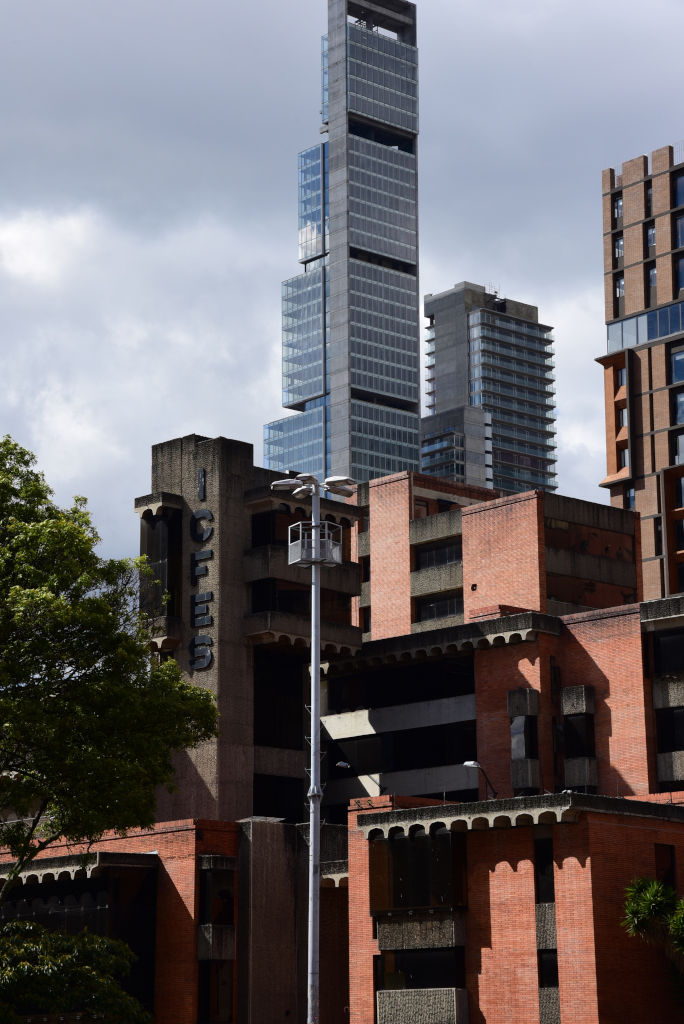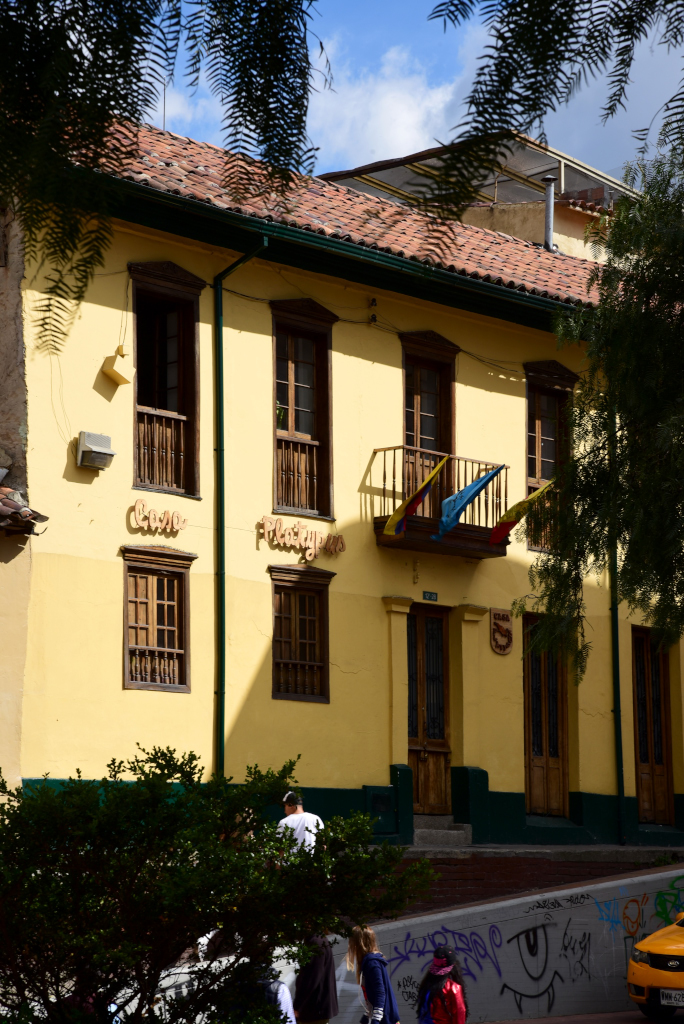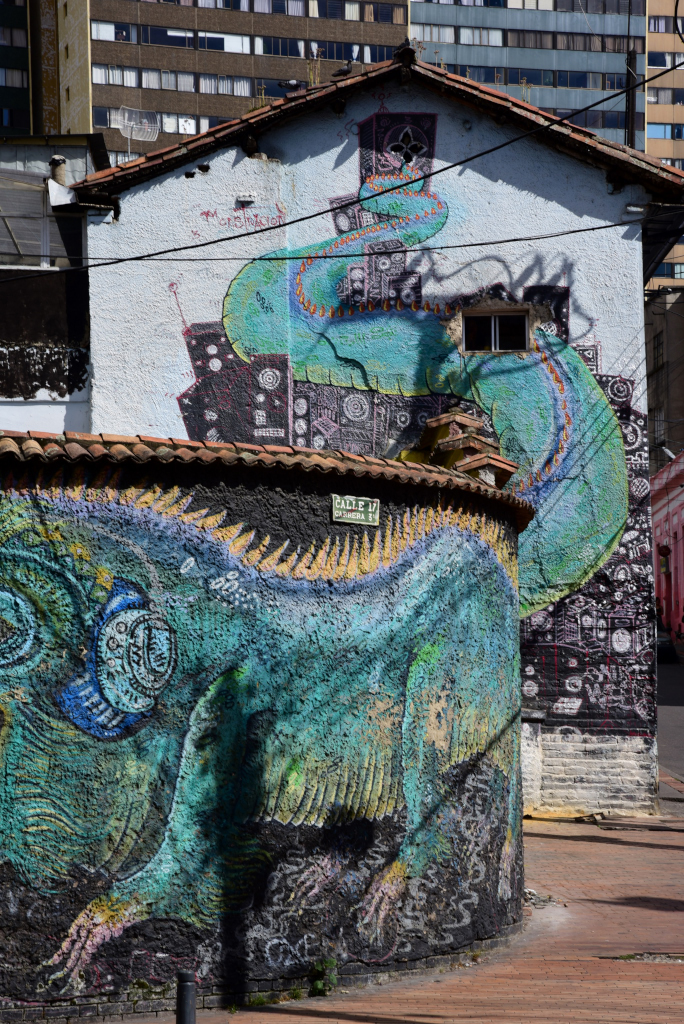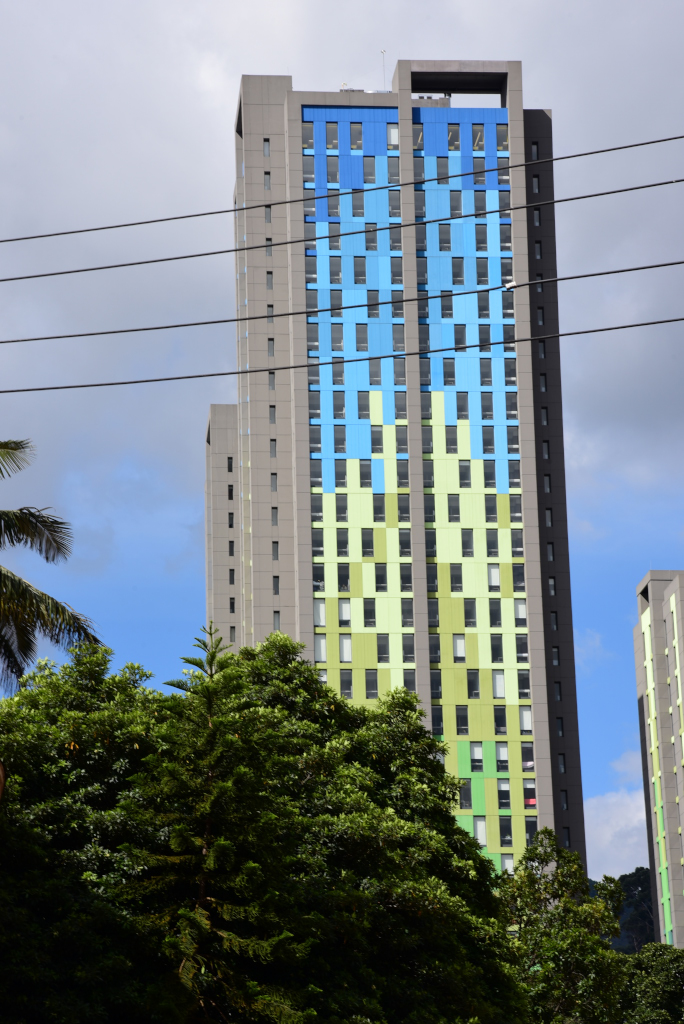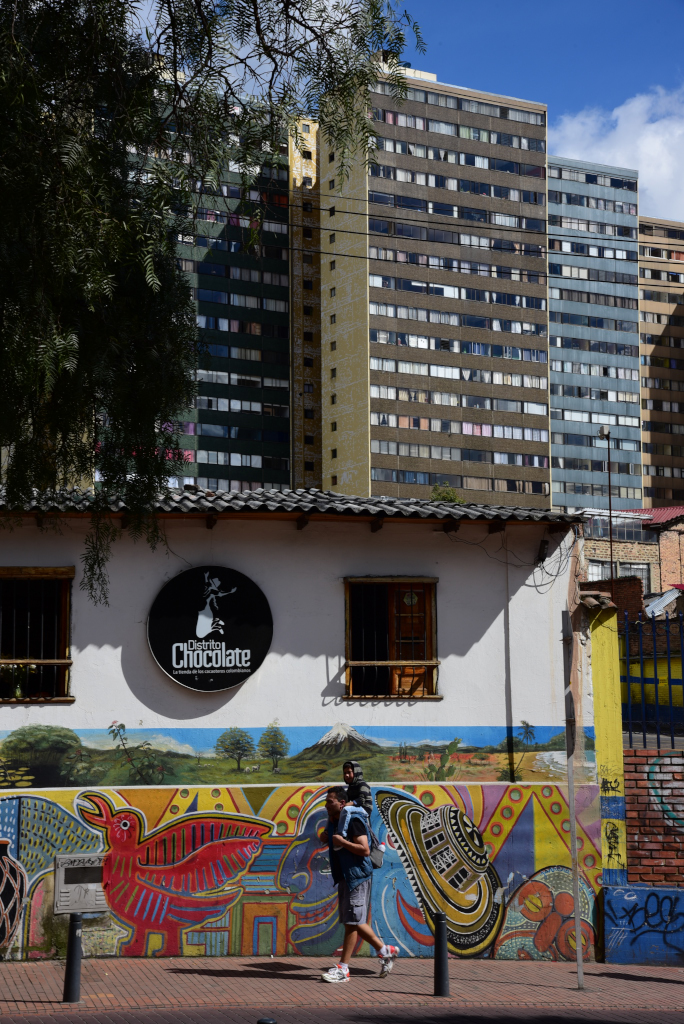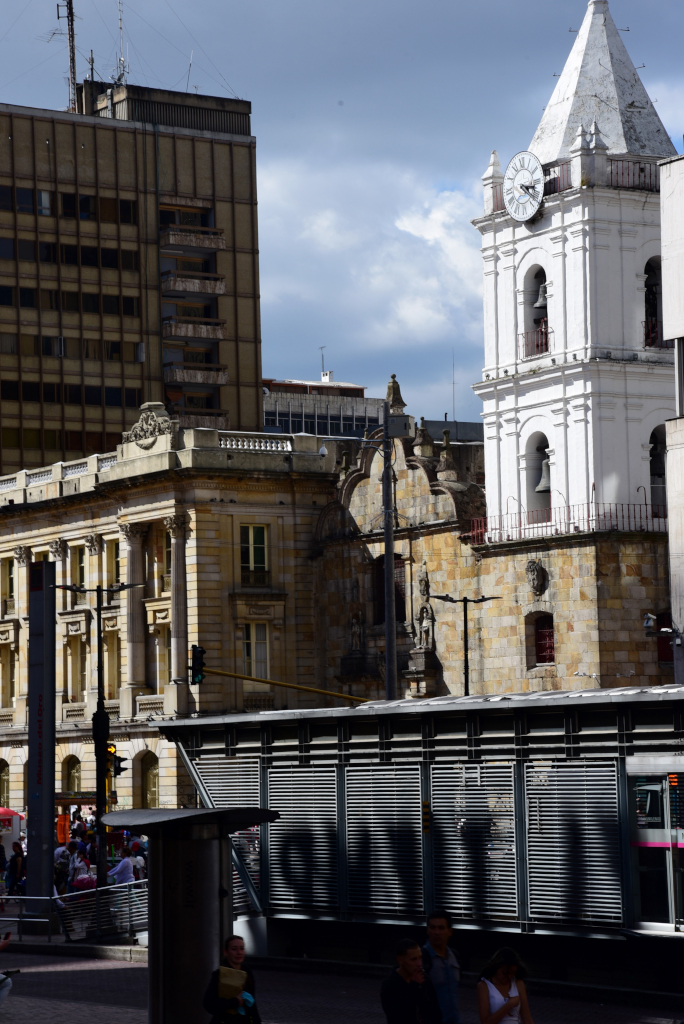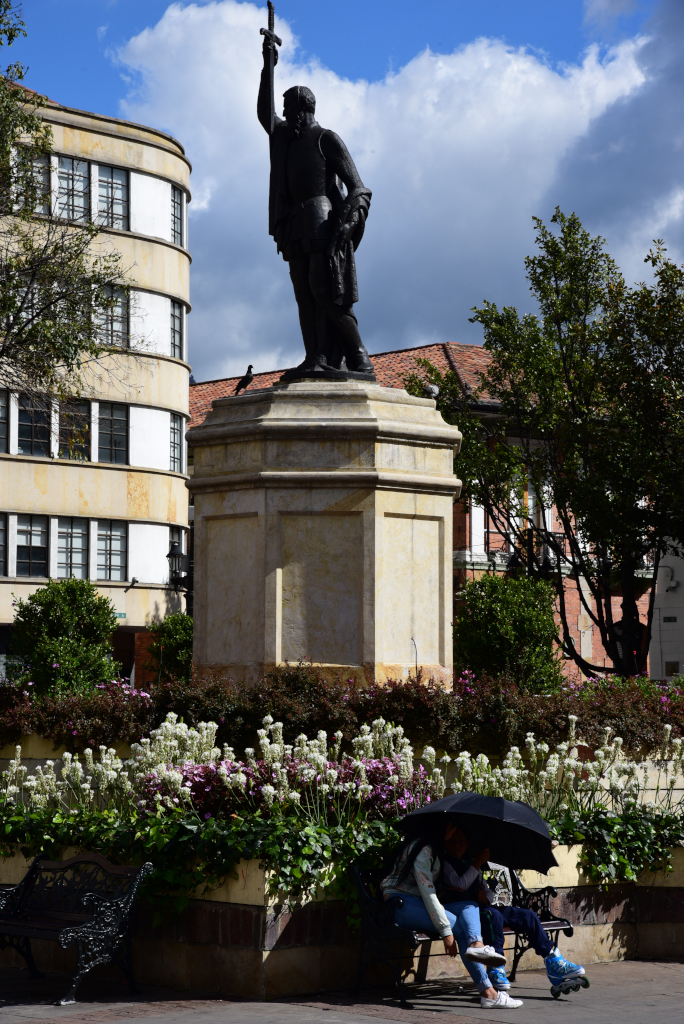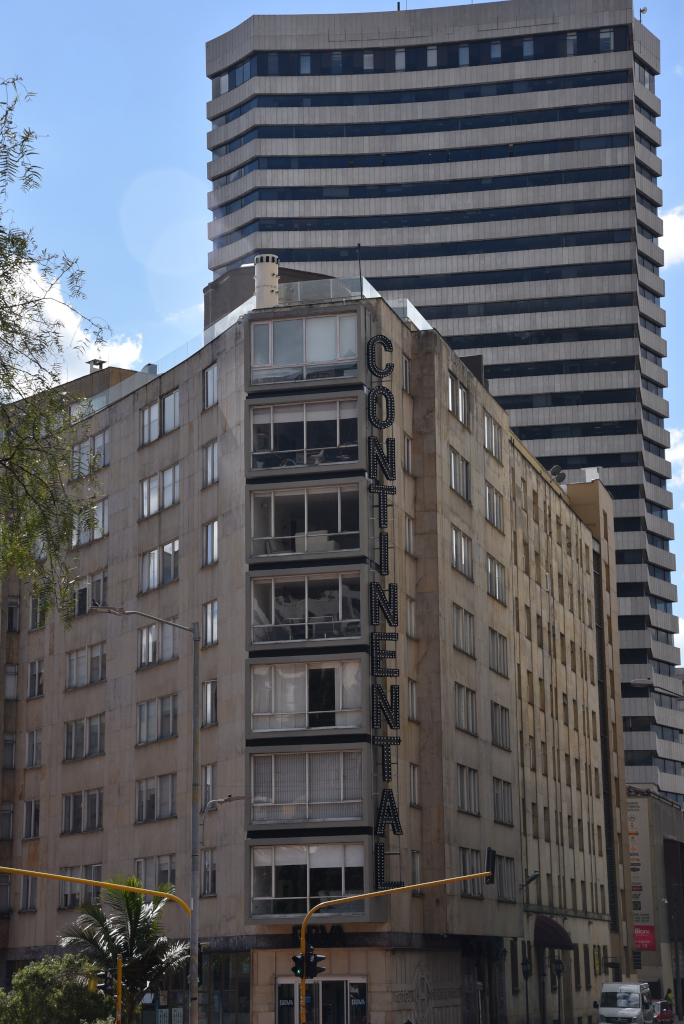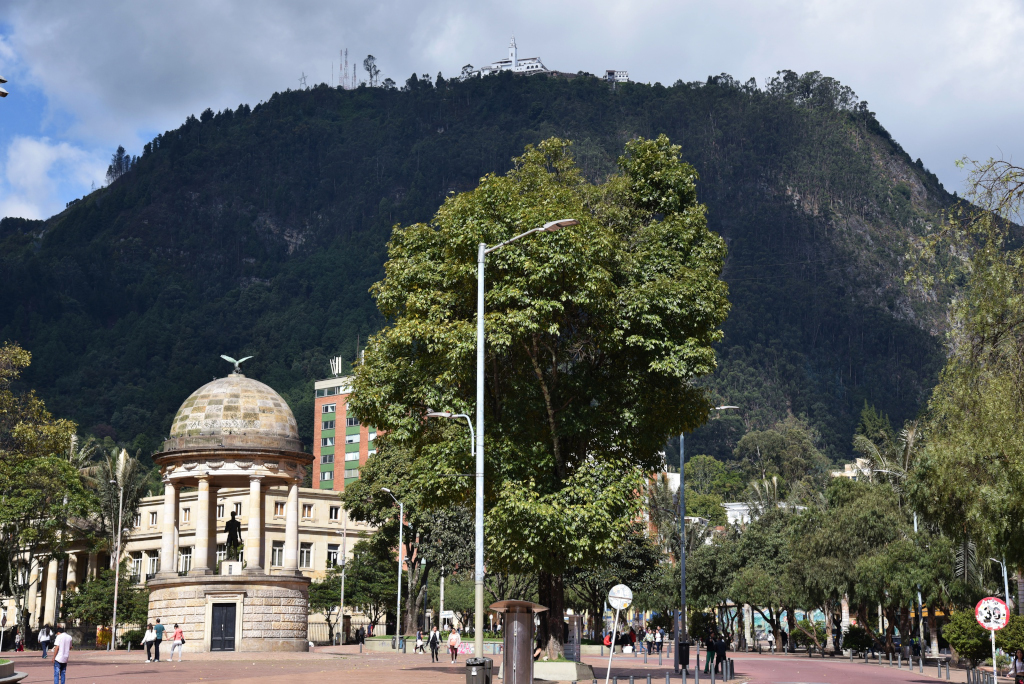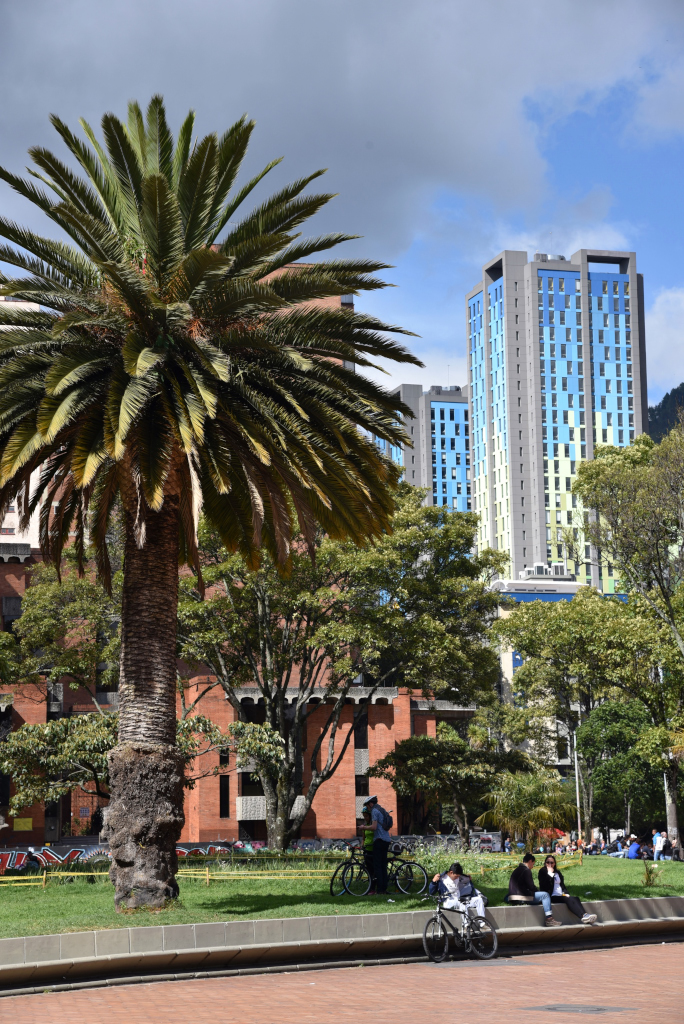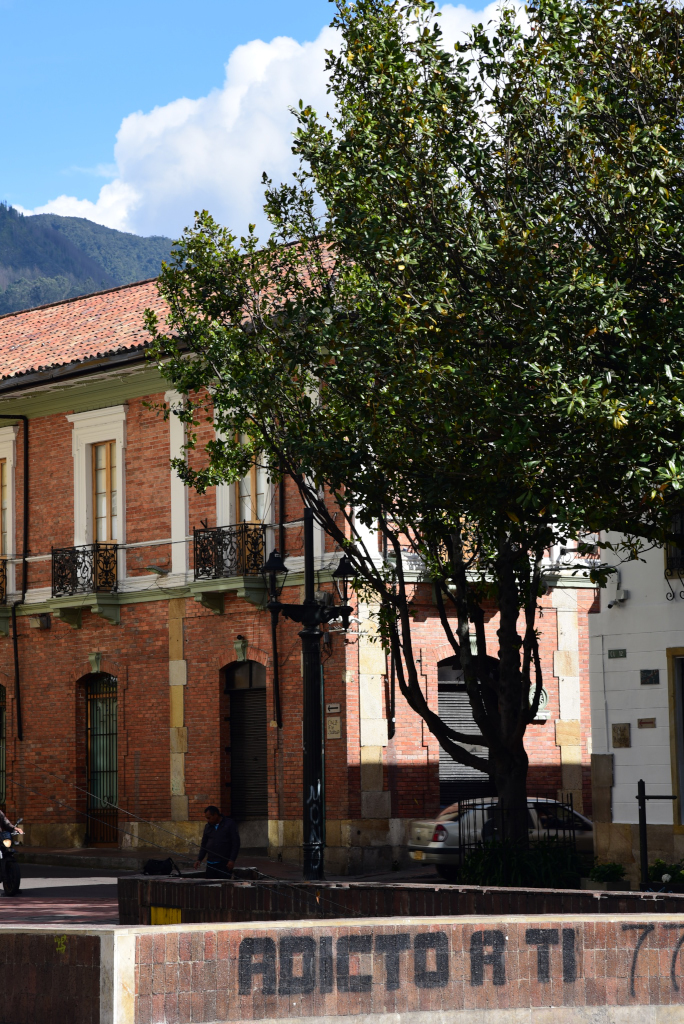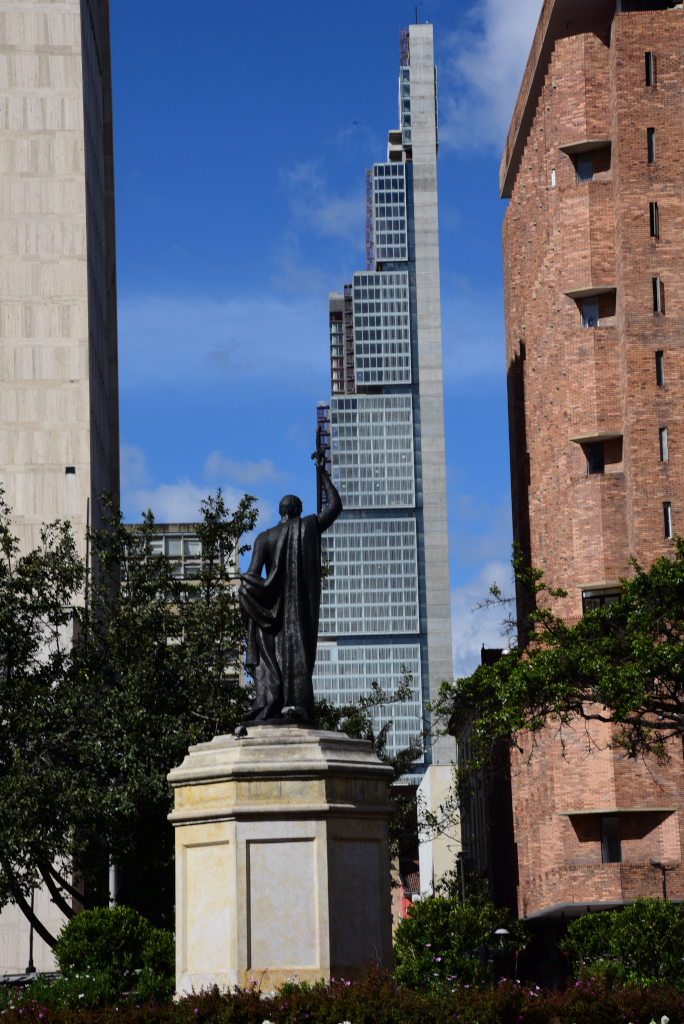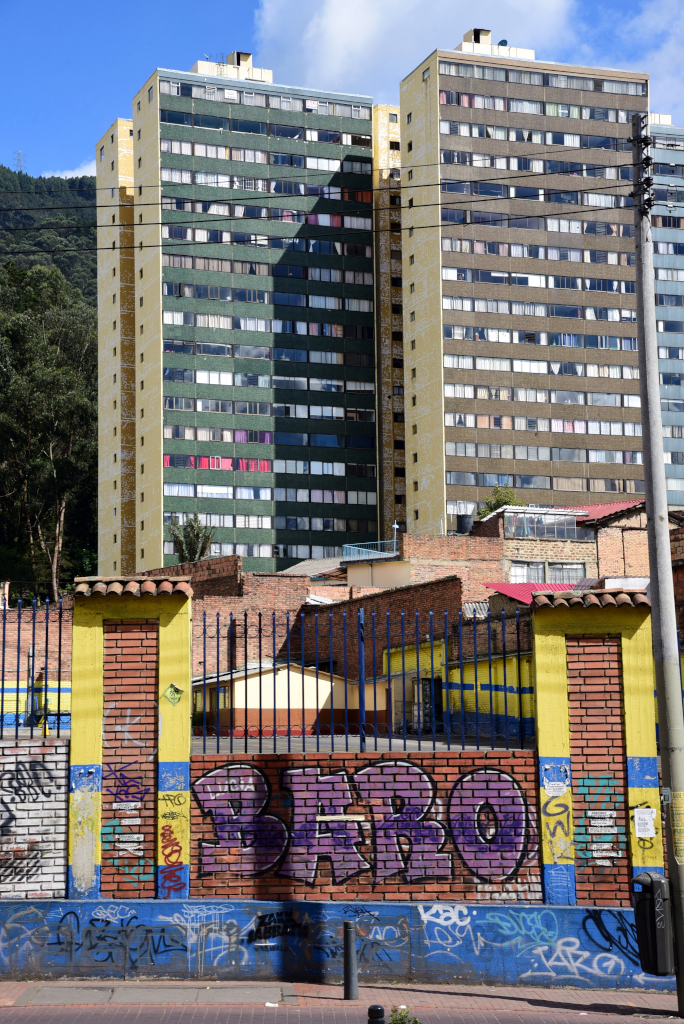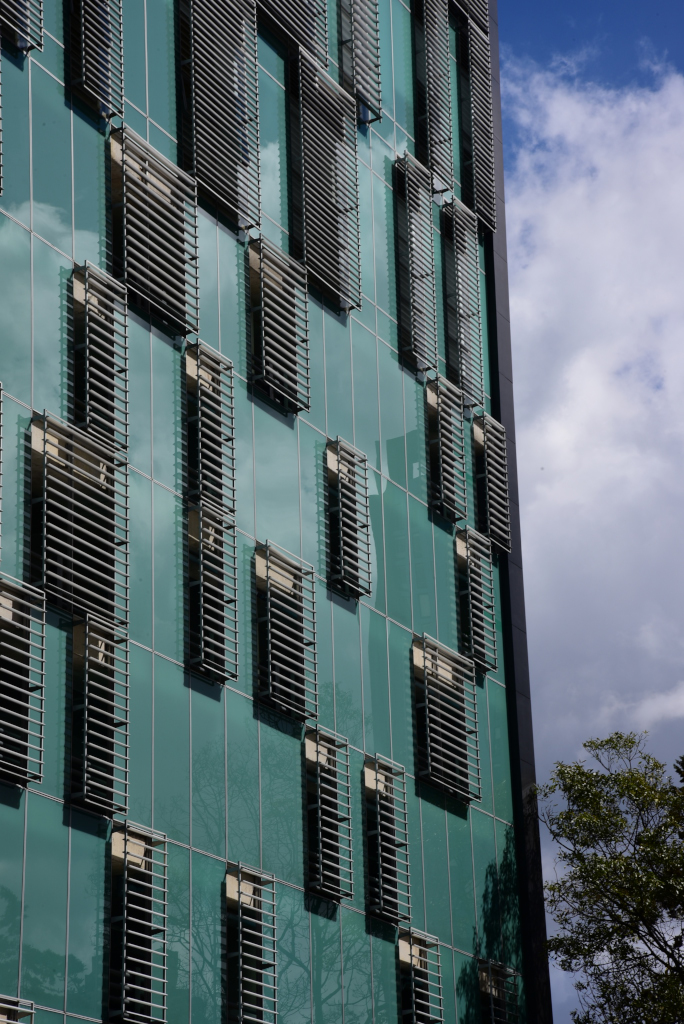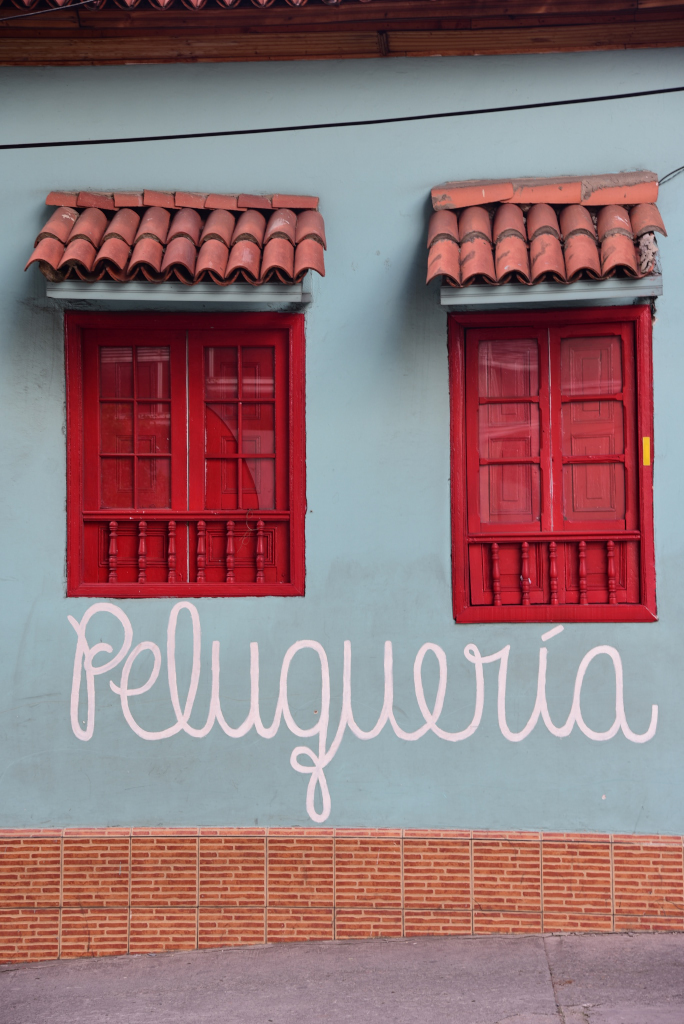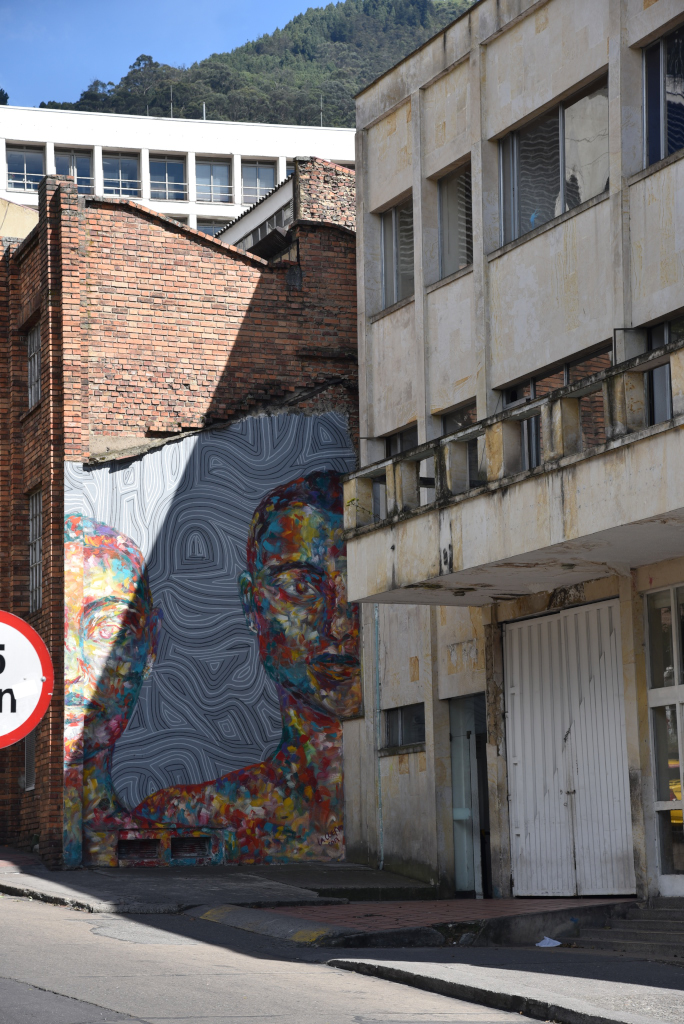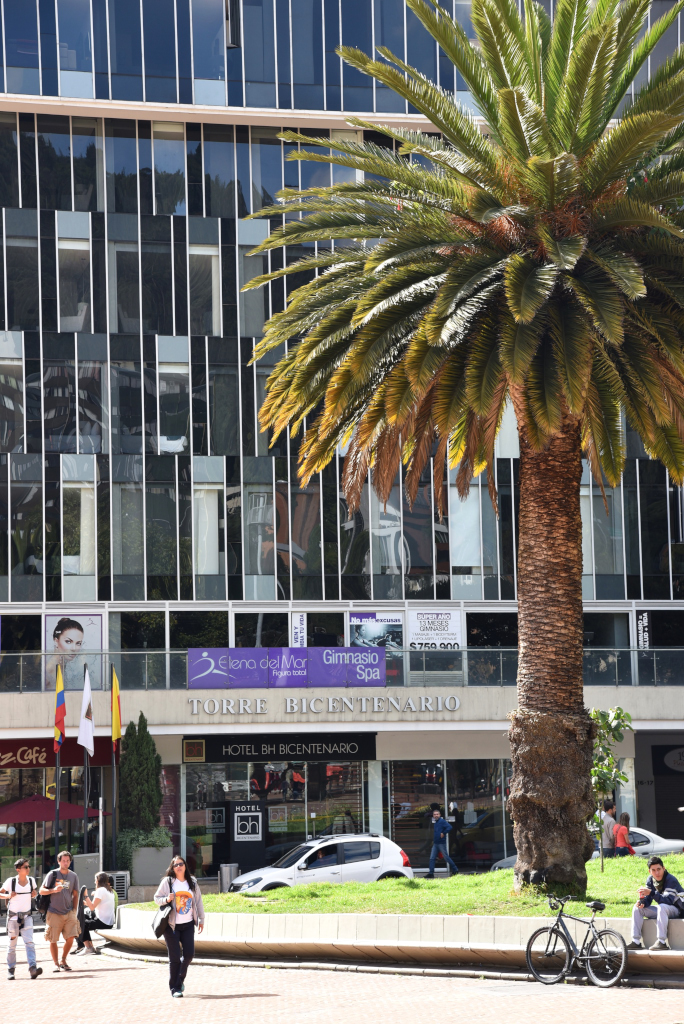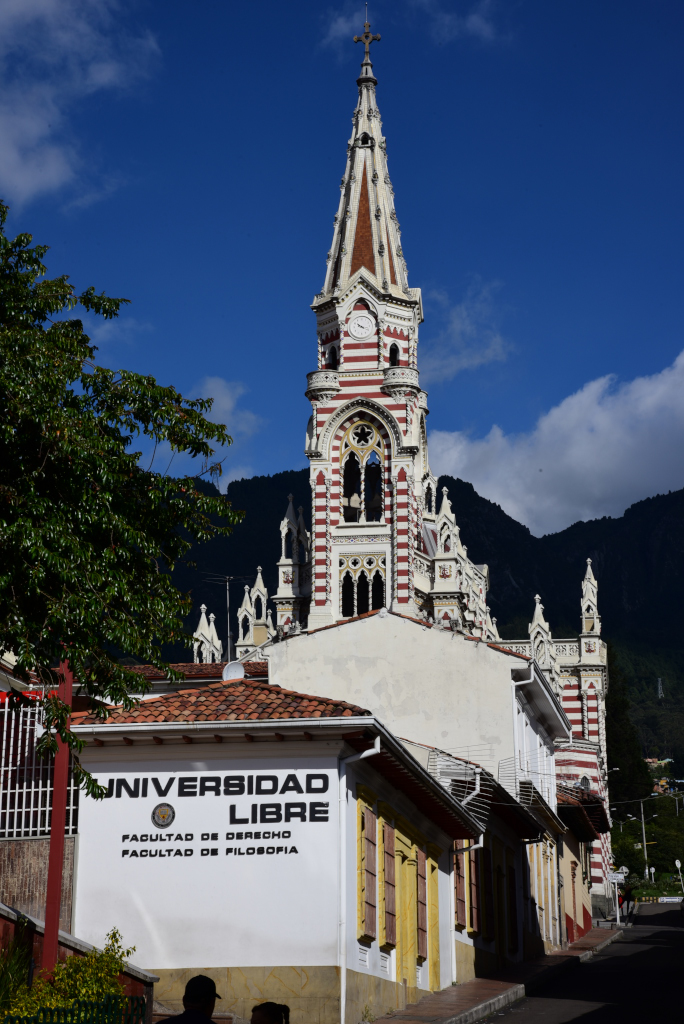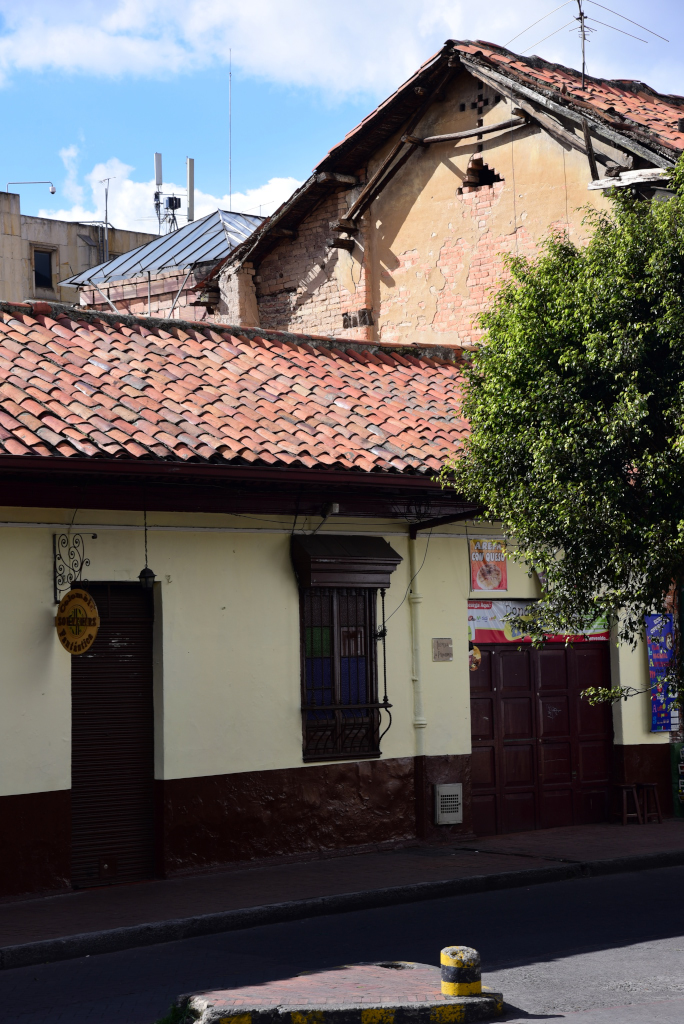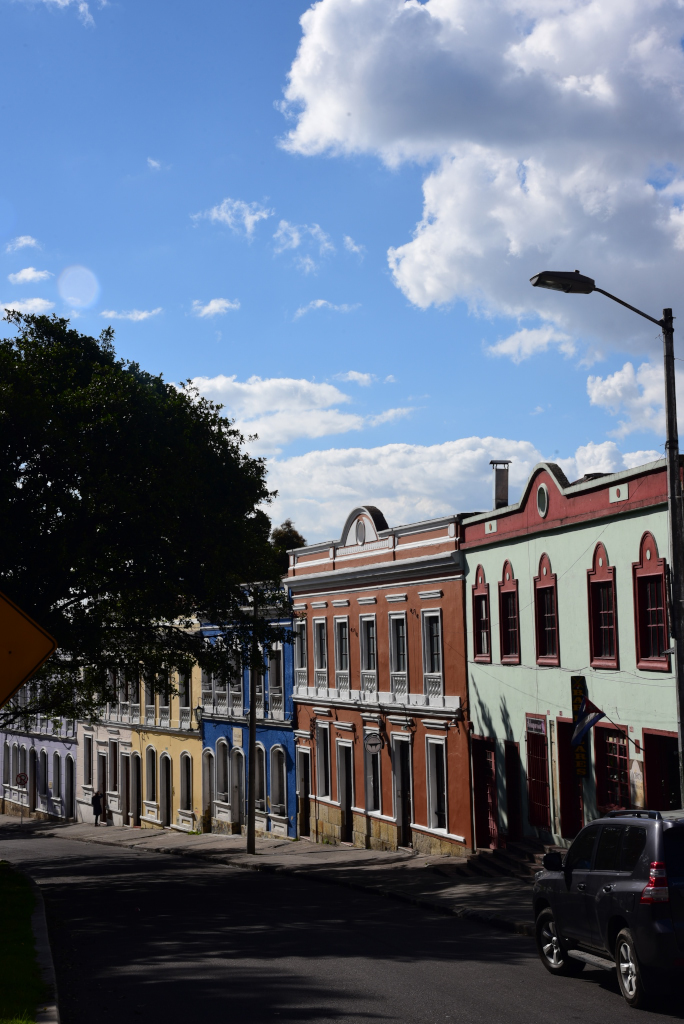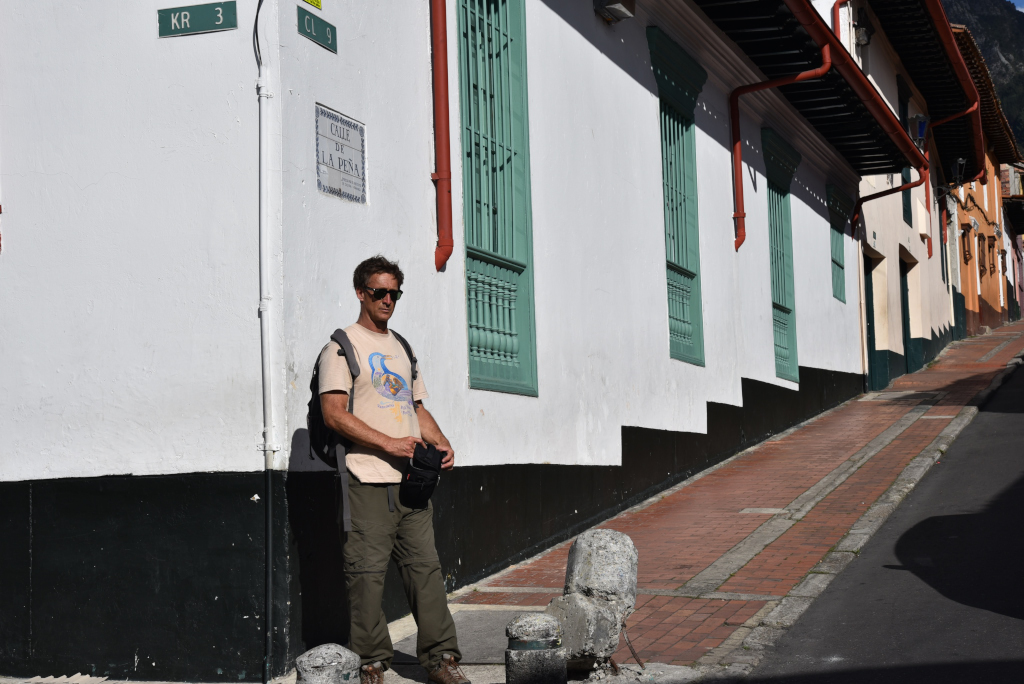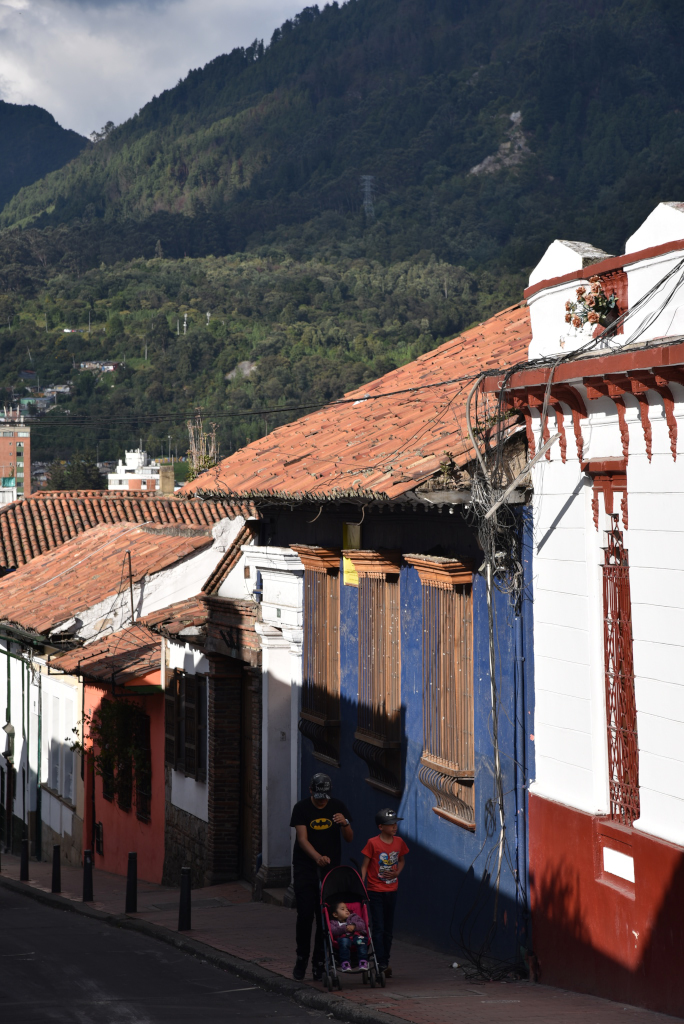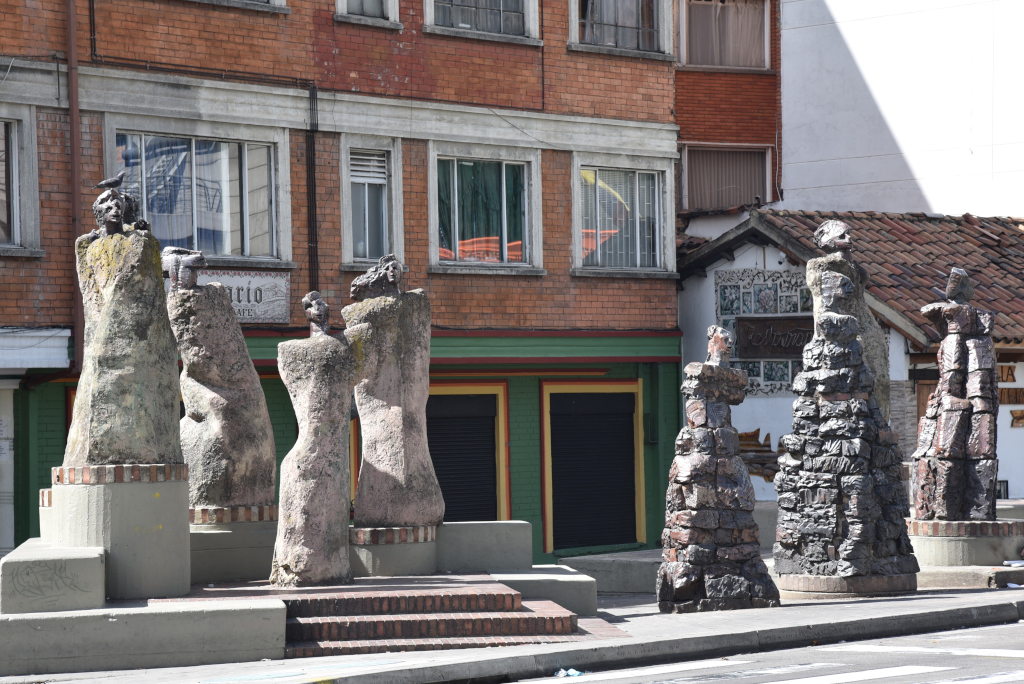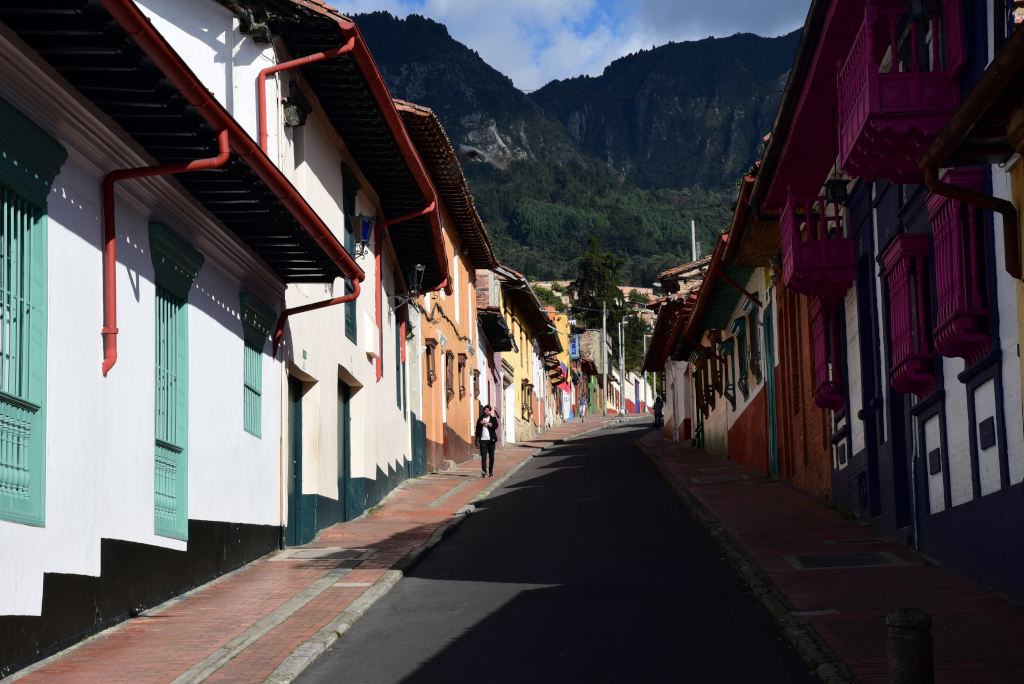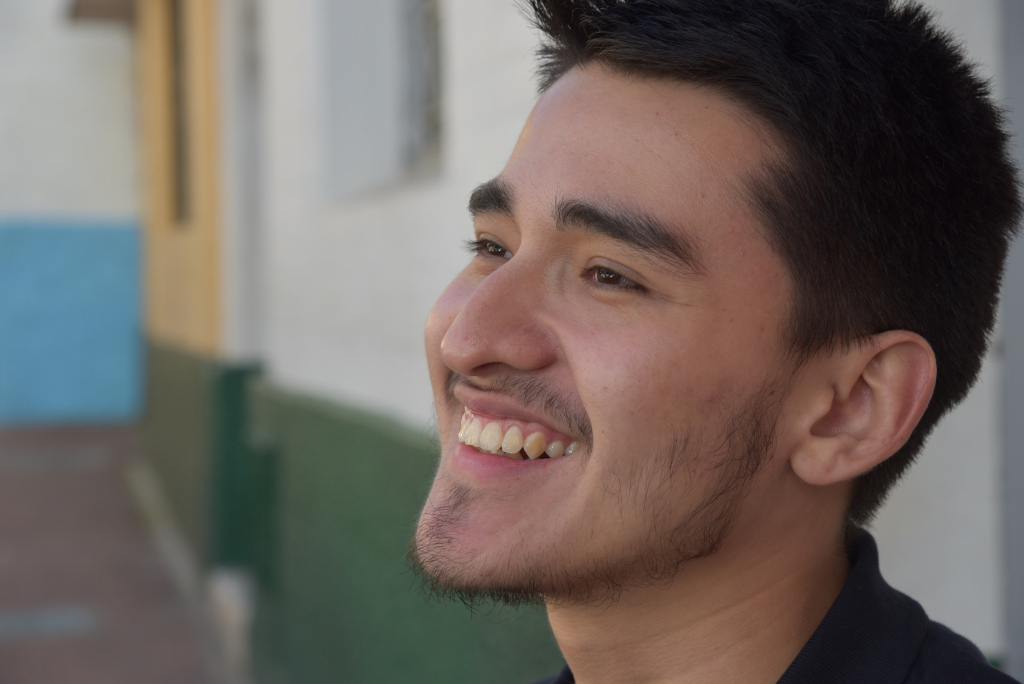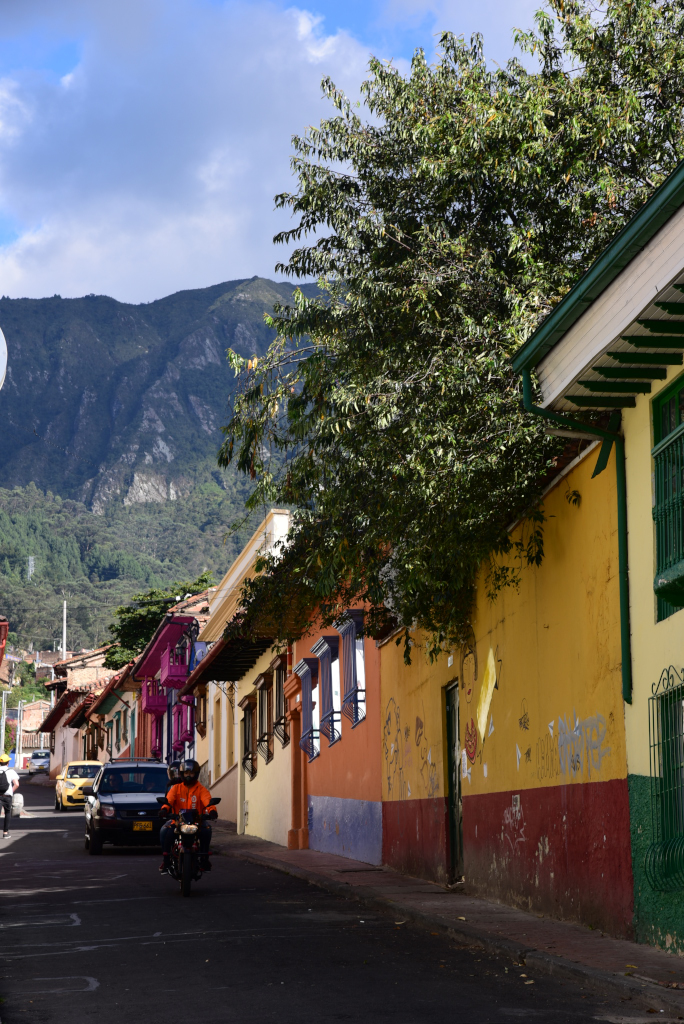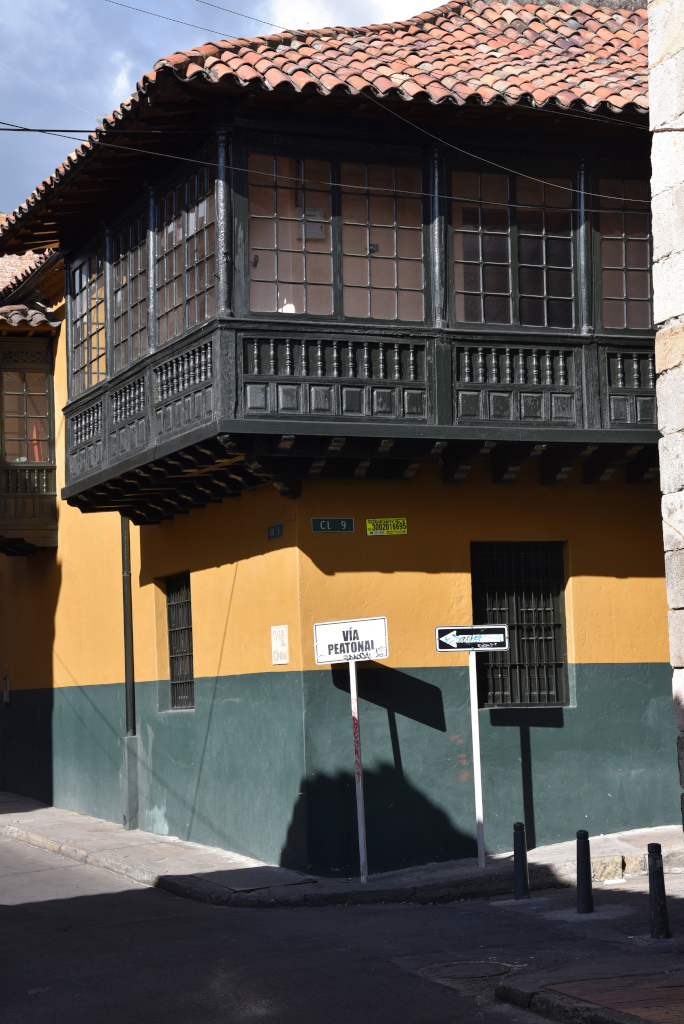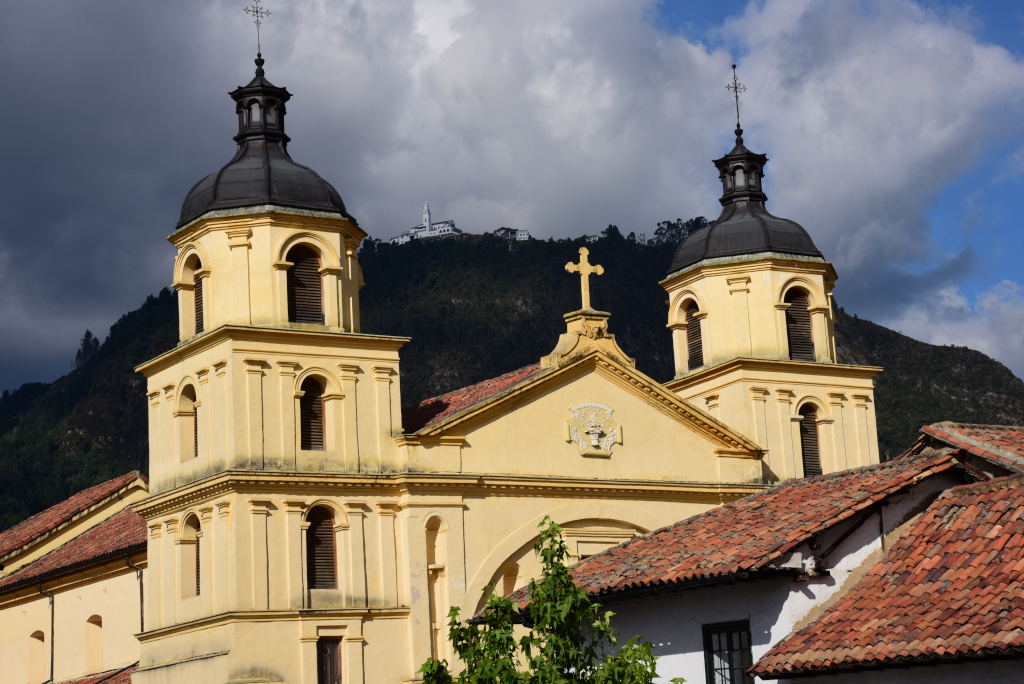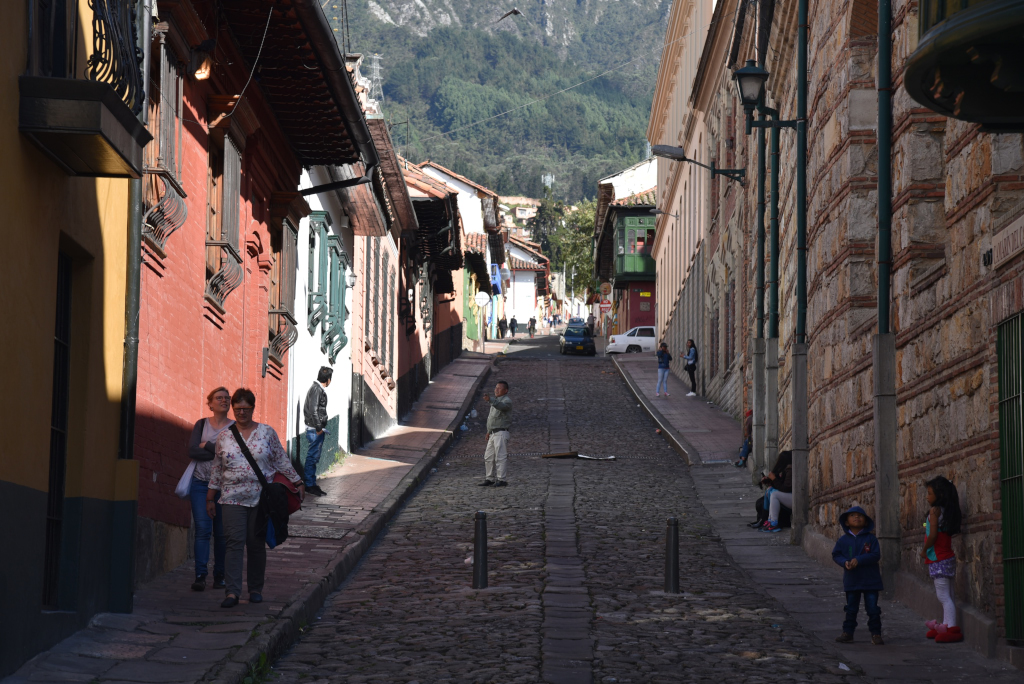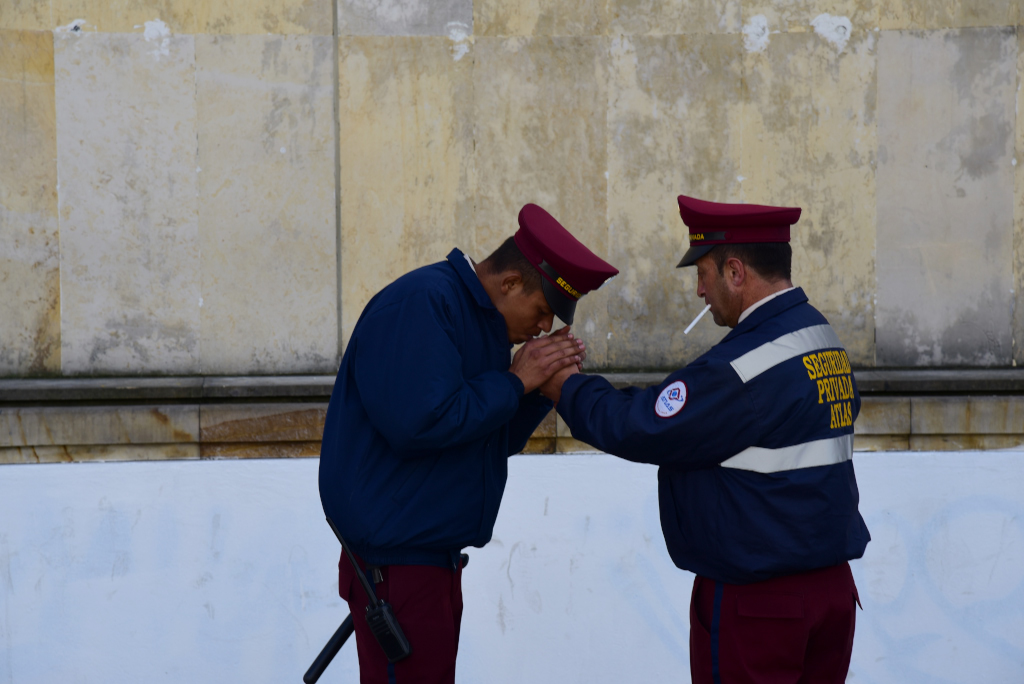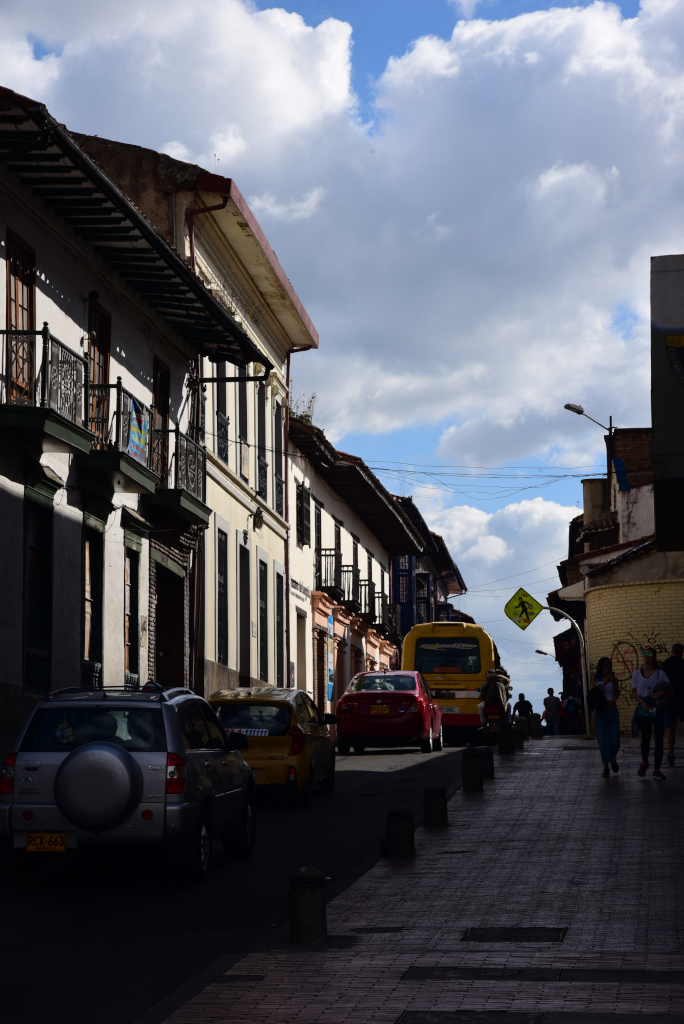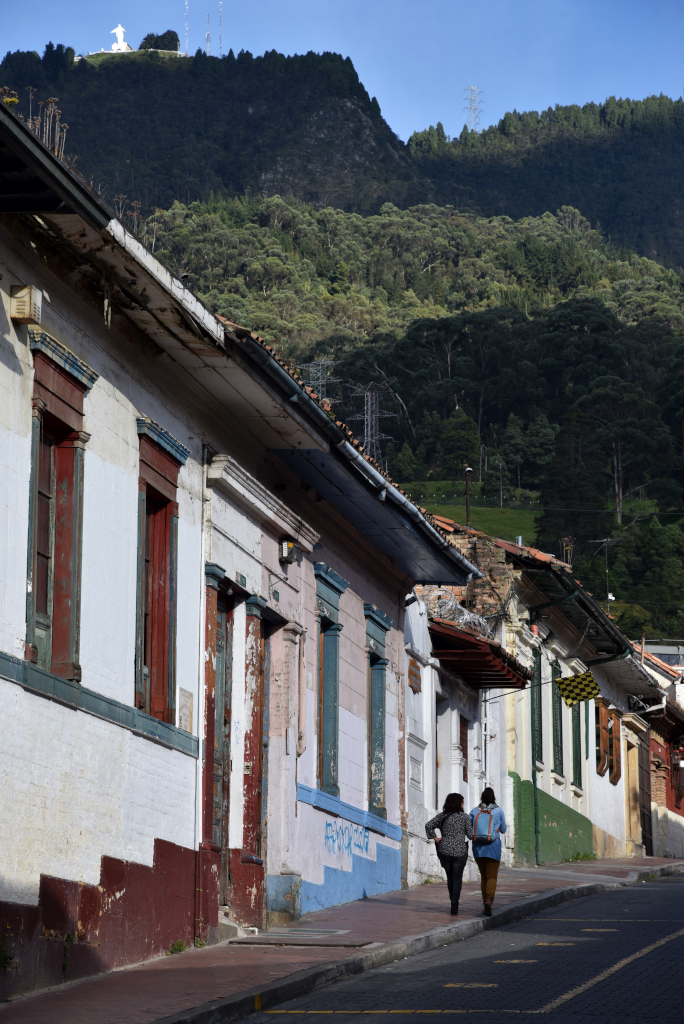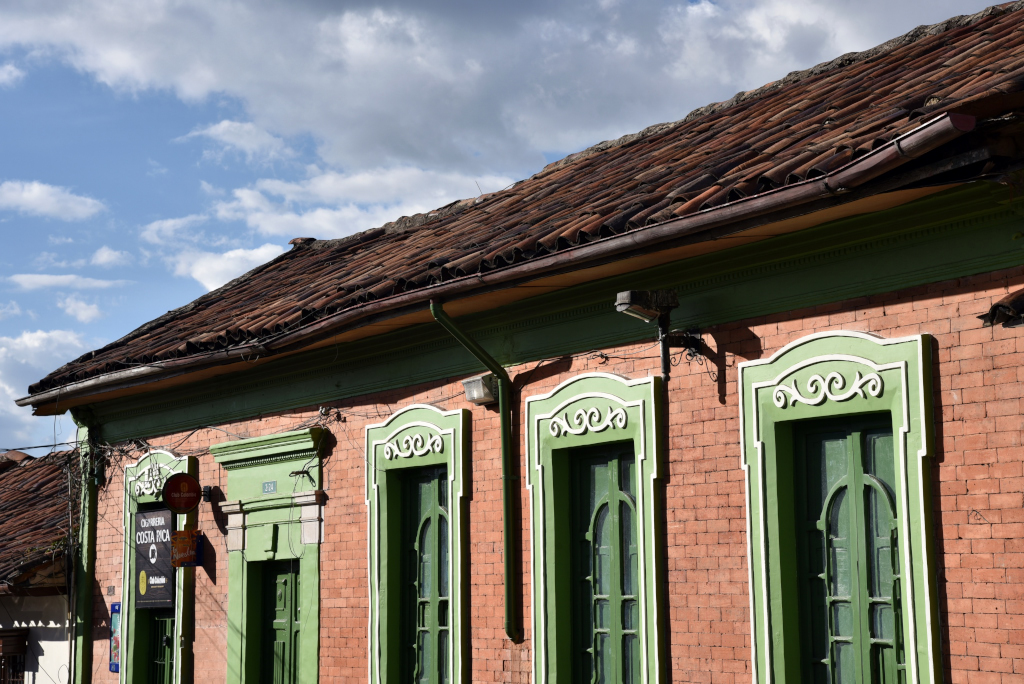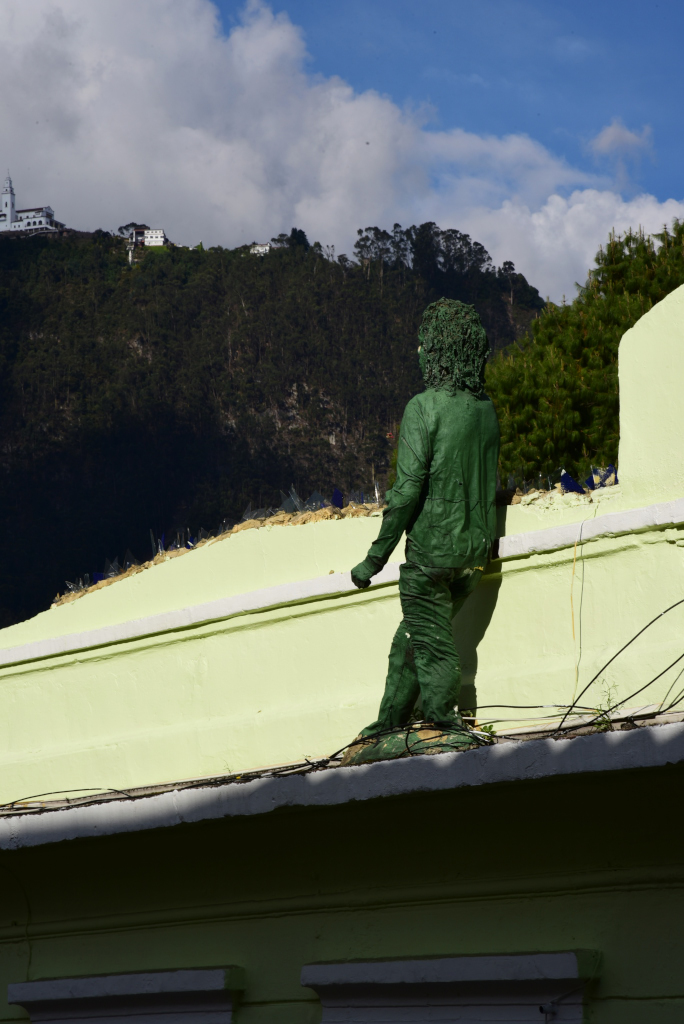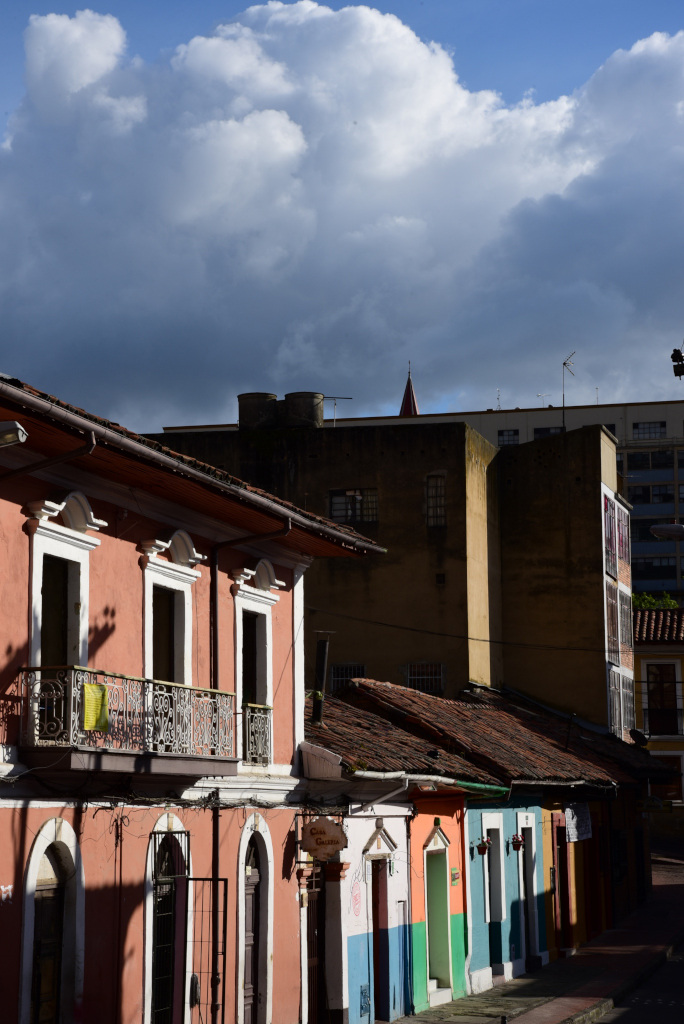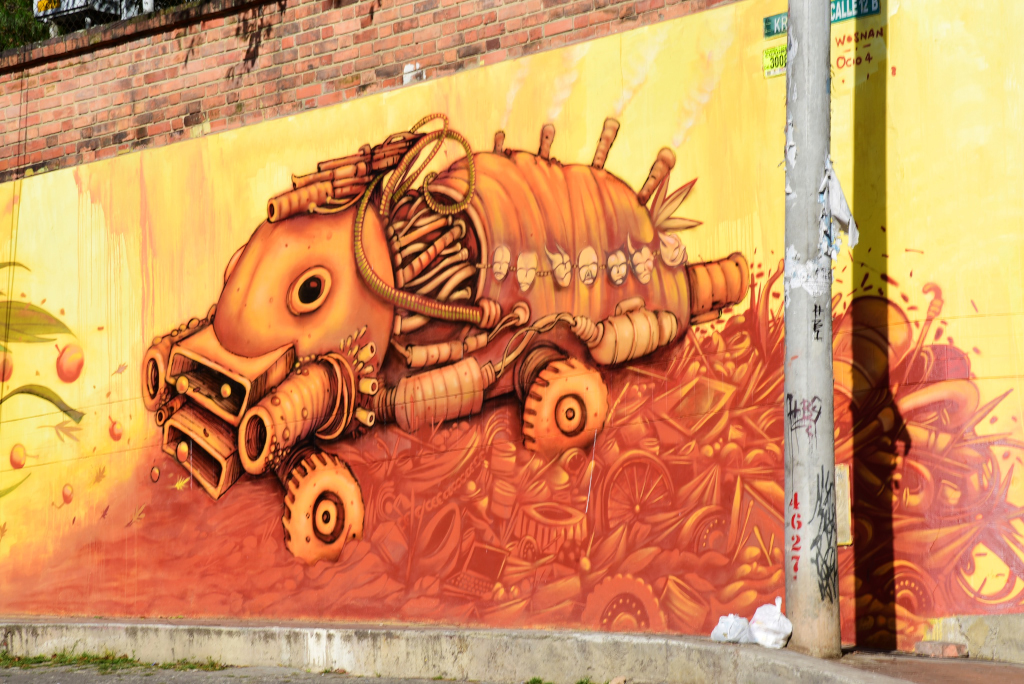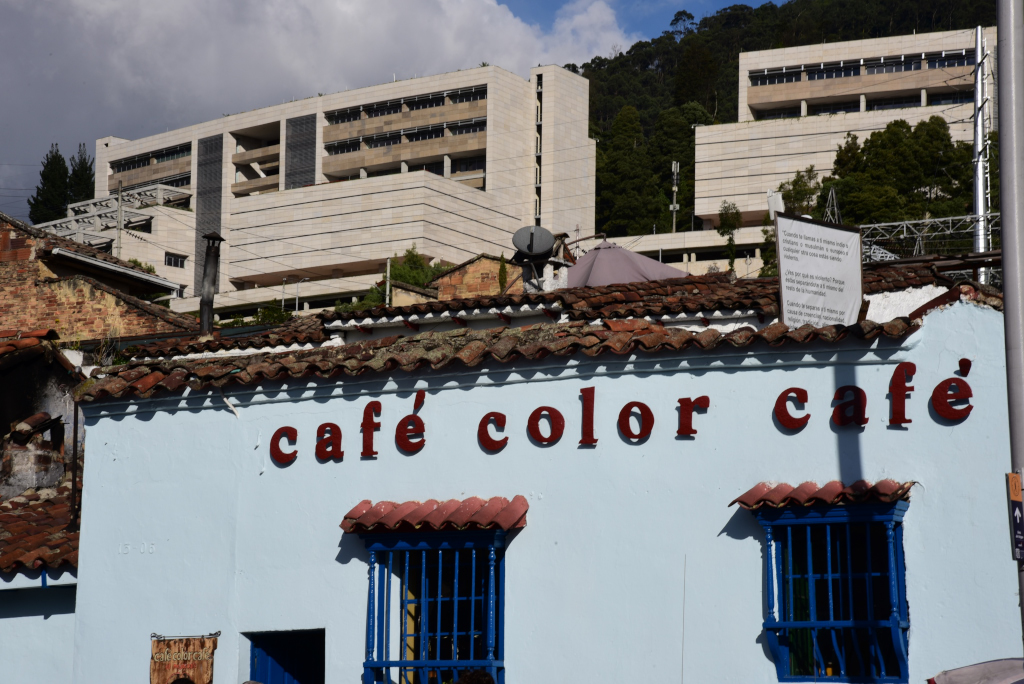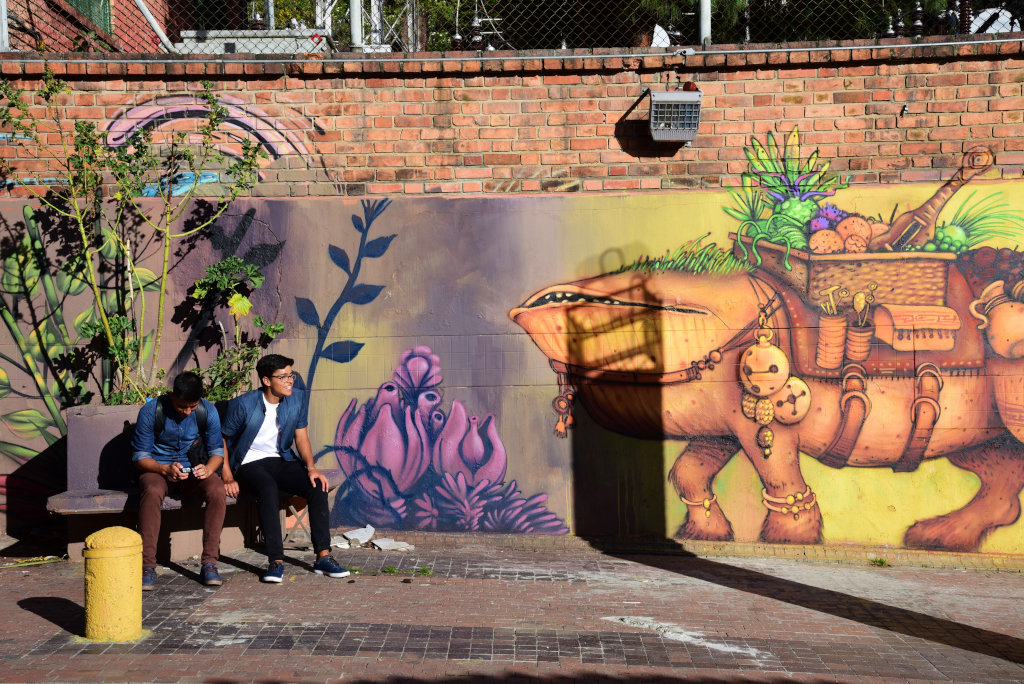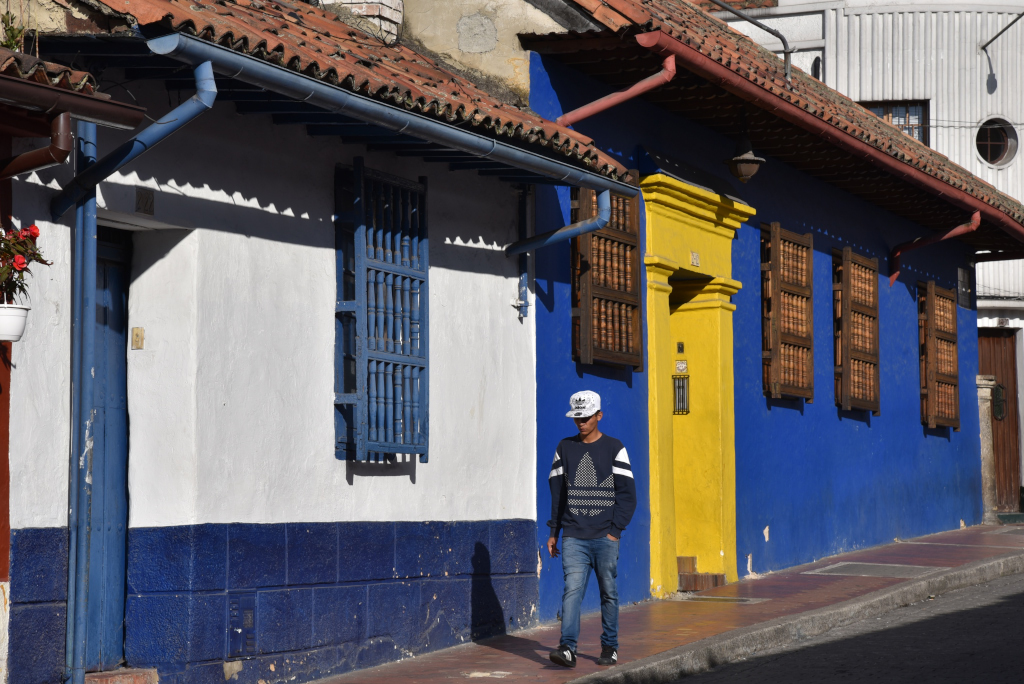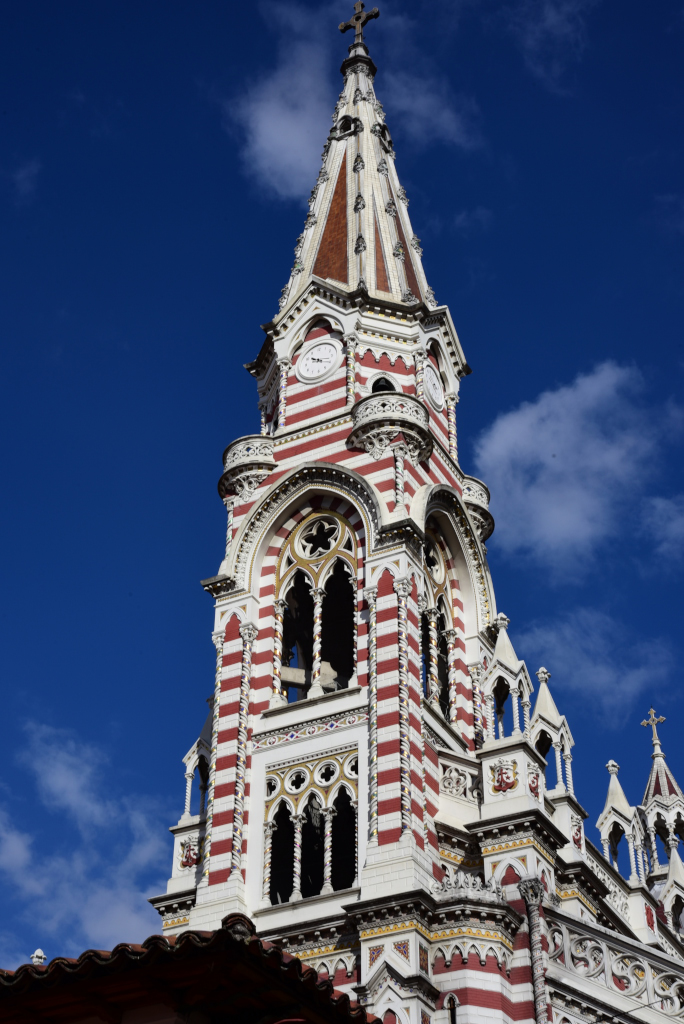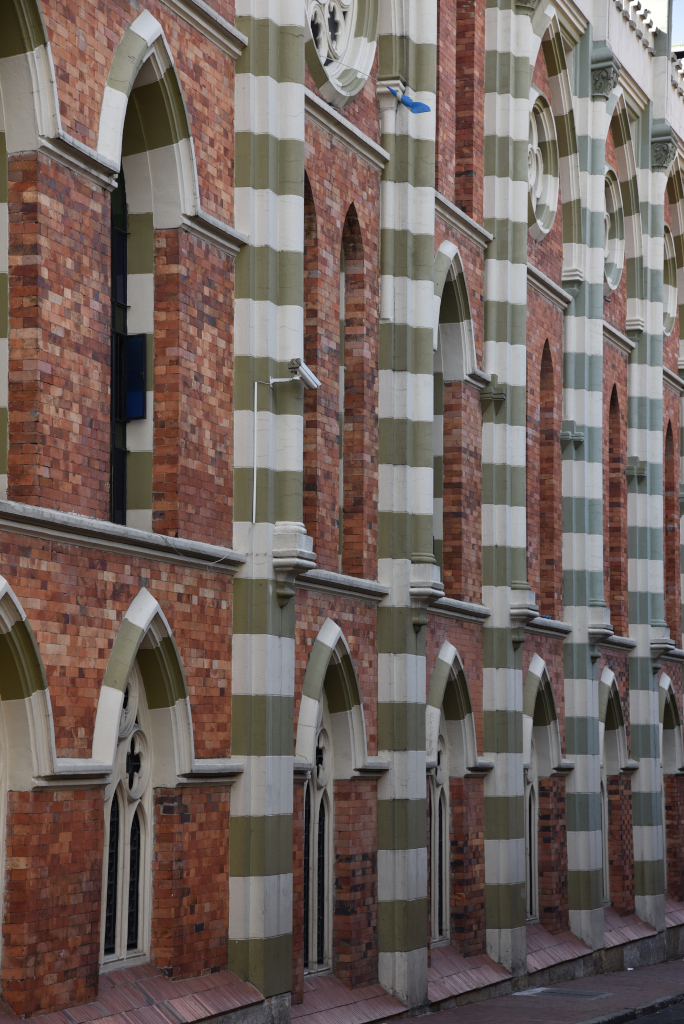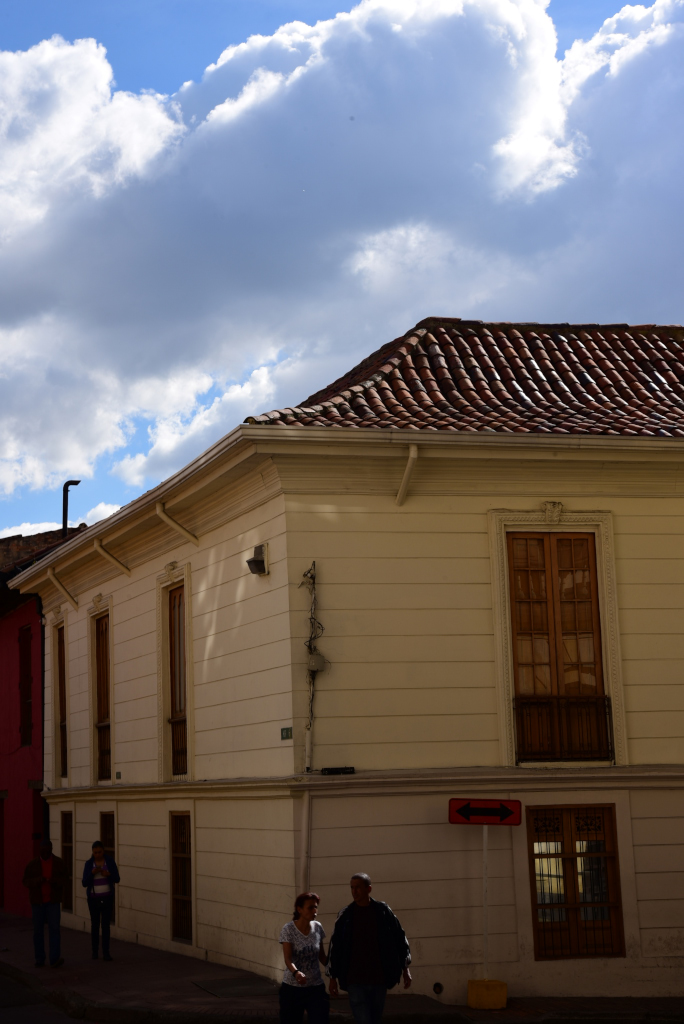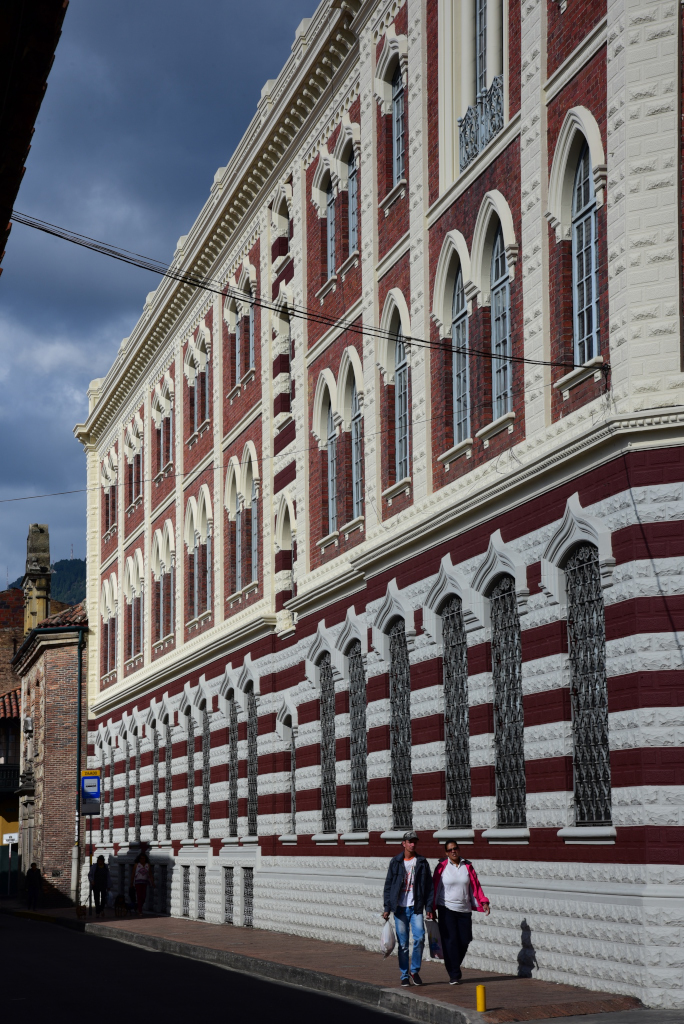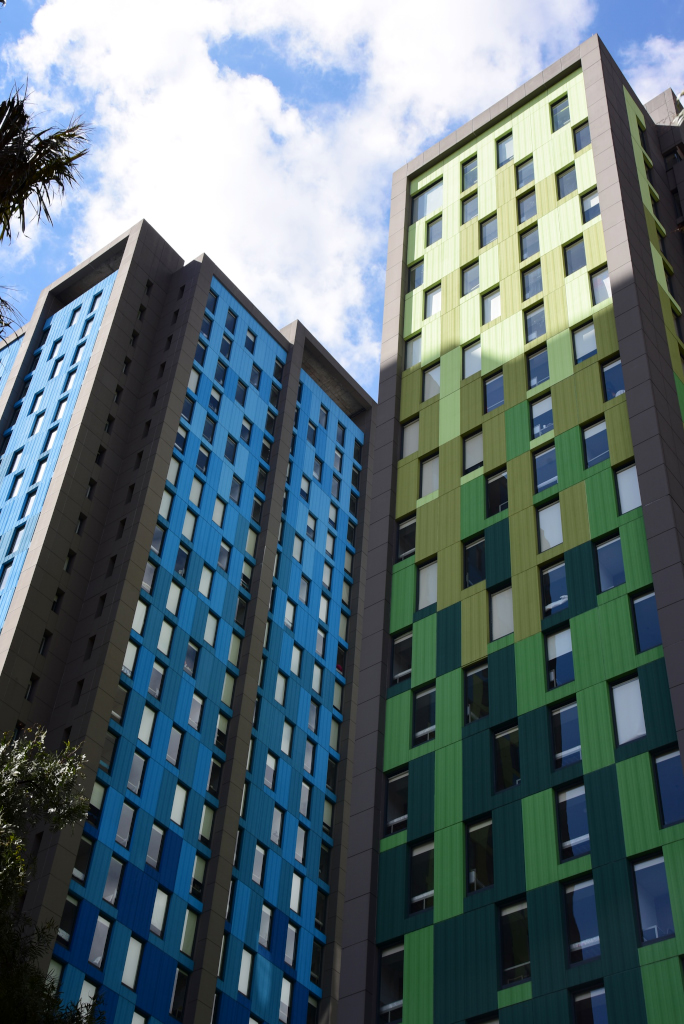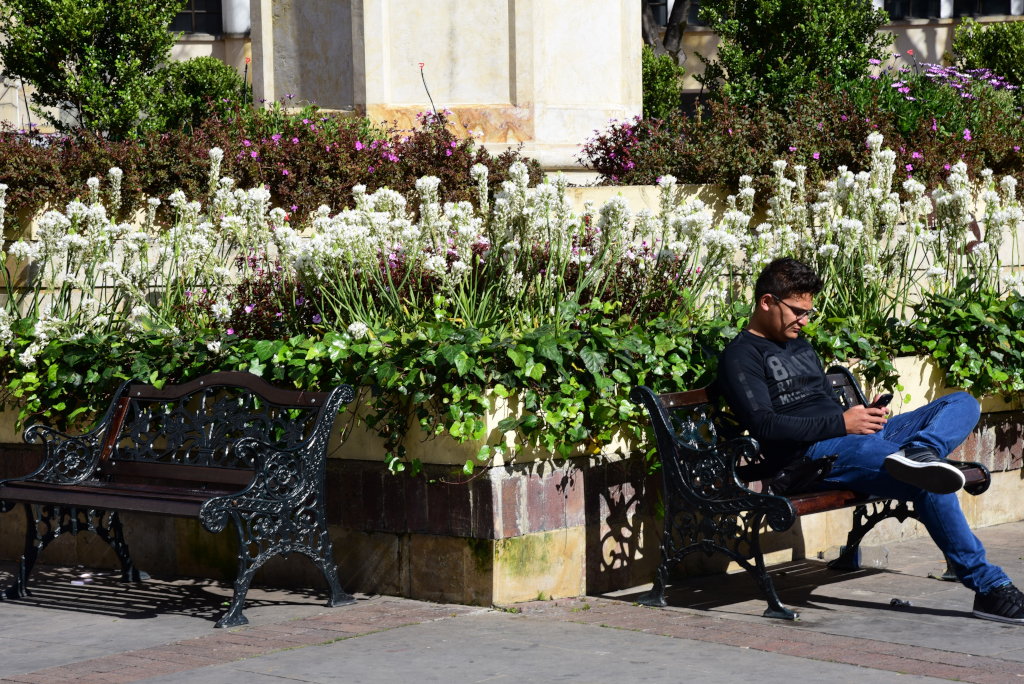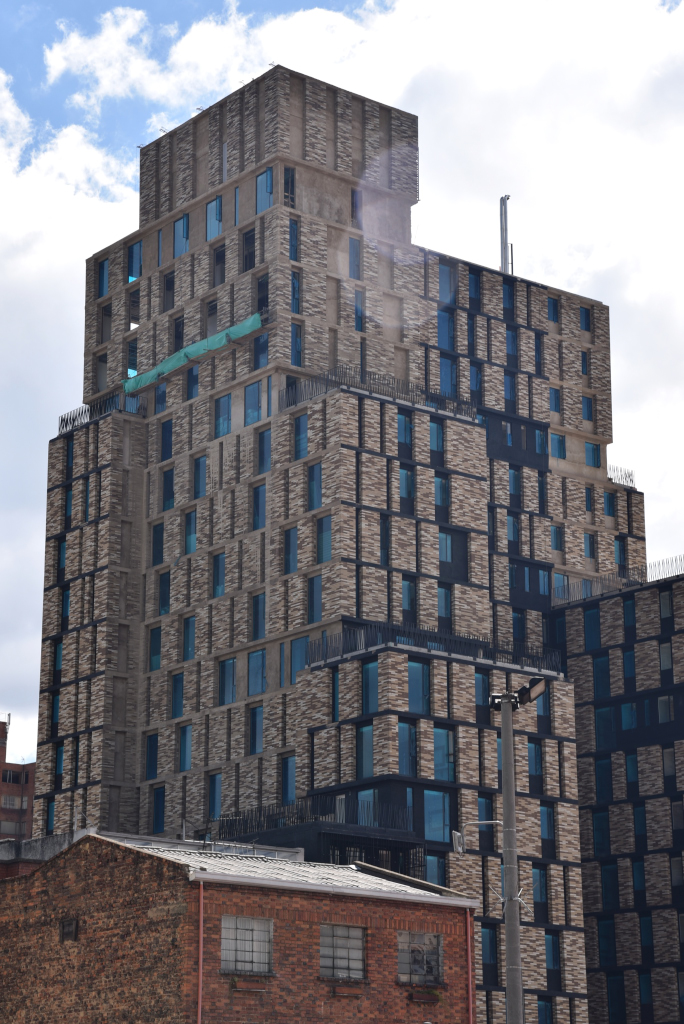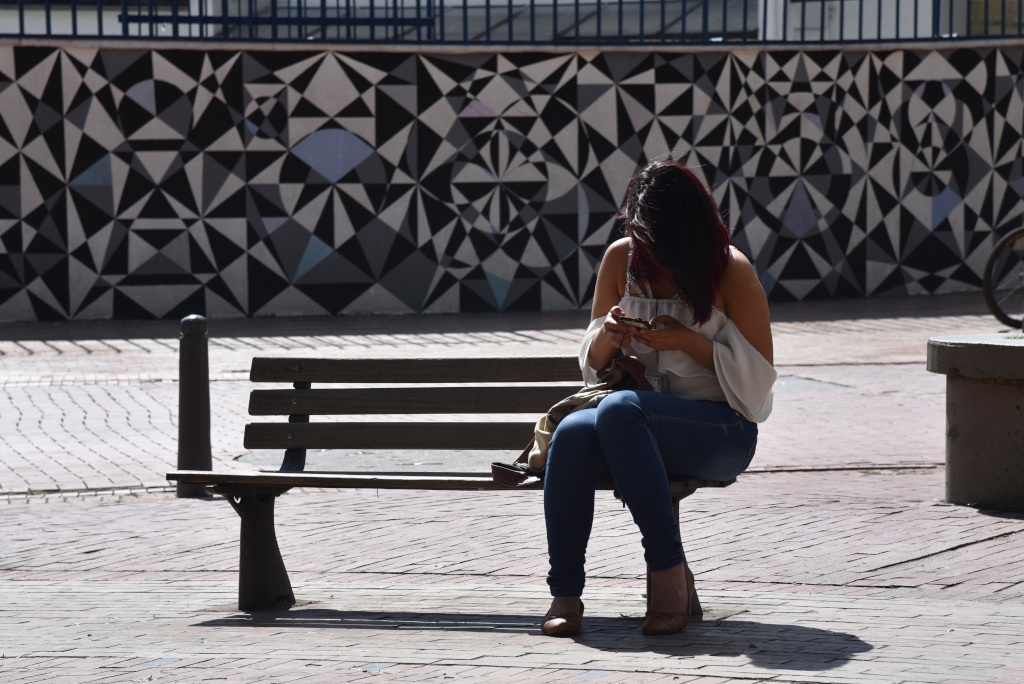March 11, 2018
The mission today is to revisit the salteña place west of Carrera 7, then head to the Museo del Oro. Things don’t go quite as planned, however.
In Zona G’s restaurant strip on Carrera 5, I just have to drop by the fancy pasteleria and Italian restaurant Grazia for a morning espresso and fine pastry, but am disappointed, the coffee bitter, with poor finish, and the pastry rich but stale. And for the exorbitant prices they are commanding, the lack of quality is unacceptable.
The trip to Milivainili for some of the exceptional salteñas fares no better, as the entire neighborhood is shut down, not that wandering through the Quinta Camacho and La Porciúncula neighborhoods isn’t interesting. Now to Avenida Caracas and the nearest TransMilenio station to buy a bus card, which is about time, considering the experience I had walking back from Usaquén on Friday, given that I had no bus card. I expect to get assaulted or robbed on the TransMilenio, but the challenges are more prosaic. There are numerous lines, with different stops, and it seems that only one of the lines actually goes into the centre, Sunday having limited service. At least there aren’t huge crowds, as during the week it is virtually impossible to get a seat on the overcrowded buses.
The Universidades station may be on the northern fringe of Candelaria, but it offers a fascinating opportunity to experience the more diverse facets of the neighborhood that I was not able to take in when I visited the first time. Despite being near the city centre – whatever the city centre is defined as here – the area is intimate, with the soaring green Monserrate before us, but also with ultra-modern towers ranging around the graffiti-laden quarter.
The fact that the sun is out in full force and the temperature warm makes the passage to the centre of Candelaria all the more appealing. Walking eastward along Calle 22, the tiny, brightly painted stone houses leading up Montserrate loom overhead, and in stark contrast, the ultra-modern structure of the Universidad de los Andes, which in turn leads to the broad pedestrian boulevard Calle 13, arcing to the southwest, representing the northern boundary of historic Candelaria. The eastern side of the heavily treed Calle 13 is devoted to low profile historic buildings, the green mountain peaks and cotton tufts in the sky soaring behind these last remaining residential blocks that represent the eastern flank of the city.
To the west, institutional and residential structures with highly innovative designs, heralding from different eras. The area is very eclectic and yet comes across with a tremendous cachet. A narrow terraced pool follows the arc of Calle 13, stepping downwards towards the southwest, ambulatory vendors selling snacks and fresh juices, a set of kiosks further down typical Colombian arts and crafts. The area attracts a blend of tourists having strayed from the centre of Candelaria as well as locals enjoying an urban space that is both very attractive as well as bereft of traffic.
A careful balance is achieved in the design of this pedestrian space, including seating areas, water, green space, and visually arresting design components, including broad swaths of the murals that the city is famous for. The most stunning visual component in the skyline is offered by the soaring needle-thin Bacatá ziggurat. And the fact of being an area reflecting a specific design makes it utterly unique in this city.
The Parque de los Periodistas represents a return to the neo-classical character of the lower Candelaria, with imposing structures ringing the plaza, the obligatory heroic monument lined with fecund flower beds and ringed by a seating area, the cafes that would normal lure locals and visitors closed, either because it is Sunday or election day, or both. A few blocks further down, the Museo del Oro, one of the premiere attractions, definitively closed for the day, due to the elections.
I fail to see the value of closing the primary tourist attractions of the country that almost exclusively attract foreign visitors to encourage locals to go to the polls. I don’t really care that much, as I am primarily motivated to document the experience of being here, both in visual and narrative form, but the bulk of visitors have far less time on their hands to take in the attractions. Then the museums are all closed Monday as well. Below the Museo del Oro, Carrera 7, in the direction of which Candelaria becomes grittier, dedicated to unintentional street theater, and less redeeming in general.
I would like to continue into the upper reaches of the neighborhood, and indeed, La Candelaria within a few blocks becomes more residential, the initial calles above dedicated to more palatial structures, including some upscale hotels and institutional buildings, while further up, the structures become more modest, and yet also cohesively Spanish colonial, the streets narrow, the buildings pastel adobe, with terracotta roofs.
The area feels both beautiful but somewhat lifeless, given that virtually all businesses are closed for the day. But then this area of upper Candelaria also corresponds much more closely to the historic towns I have visited in the rest of the country, in good and bad ways, the downside apparent in the potential for congestion, the concentrated air and noise pollution due to the confining nature of the narrow streets. And these narrow sidewalks make it hard to navigate, what with the constant traffic.
It turns out that the Candelaria is also home to numerous smaller museums that I will hopefully have the opportunity to take in at some point. The Museo Botero and adjoining museums are also closed for the day, which seems ridiculous. So on I soldier, higher and higher, Montserrate looming overhead with the shimmering white chapel on top framed against the cerulean sky.
The streets narrow and the buildings become somewhat more modest further up, hostels appearing as well as cafes that are actually open, fashionably gritty, pure backpacker in appeal, although the sensibility of the area fills me somewhat with trepidation, given that I am precisely the kind of individual that once would have been glued to the area. Despite the hippie pretentions, the few establishments that are open may be gritty, but also quite expensive.
The Plazoleta Chorro de Quevedo is the epicentre of hippie sensibilities, thick throngs of backpackers and locals milling around this parque, clearly the place to be seen, the alleys radiating away from the parque narrow, rife with the smell of marijuana smoke, heavily bejeweled and dreadlocked young Latin American alternative types flogging their homespun necklaces and bracelets to backpackers, the glazed bonhommie probably more riveting for those heavily under the influence.
Fortunately, Calle 13 is a mere few blocks away, and soon am in a completely different universe, accompanying the now thinner crowds of largely hip young Bogotans on the Transmilenio heading north again. Avenida Caracas has little to redeem itself with, but wandering only a few blocks east of the Calle 72 station into Quinta Camacho reveals massive but genteel manors screened with heavy foliage and flowers, most of the select restaurants of the area shuttered.
And on the privileged Calle 5 back in the Zona G, the street is littered with motorcycle food couriers and most restaurants are still open. The evening concludes with a good burger at the Sierra Nevada … I could in theory have launched into a major cooking session back at the apartment, but following the virtually vertical climb towards Carrera 1, I would rather spend my remaining energy relaxing for the evening …

